What Is Community-Based Tourism? Definition and Popular Destinations
CBT provides communities with the opportunity to play a lead role in their own tourism industries.
- Chapman University
- Sustainable Fashion
- Art & Media
Community-based tourism is a type of sustainable tourism where residents invite travelers to visit or stay in their communities with the intent to provide an authentic experience of the local culture and traditions. These communities are often rural, economically struggling, or living below the poverty line, and community-based tourism (CBT) gives them the opportunity to take full ownership of their area’s individualized tourist industry as entrepreneurs, managers, service providers, and employees. Most importantly, it ensures that the economic benefits go directly towards local families and stay within the community.

Community-Based Tourism Definition and Principles
In 2019, travel and tourism accounted for one in four new jobs created worldwide, while international visitor spending amounted to $1.7 trillion, or 6.8% of total imports, according to the World Travel and Tourism Council. Surveys show that travelers are becoming more interested in sustainable travel trends and supporting small businesses and unique communities. An American Express poll of travelers in Australia, Canada, India, Japan, Mexico, and the U.K. found that 68% plan to be more aware of sustainable travel companies, while 72% want to help boost tourism revenue in the local economies of the destinations they visit.
While CBT is a form of sustainable tourism, it differs slightly from ecotourism and voluntourism . Rather than focusing specifically on nature or charity, CBT is meant to benefit the community and its environments as a whole. From the traveler’s perspective, CBT offers the chance to immerse oneself in local culture and participate in a completely unique tourism experience.
Responsible Travel , a UK-based activism company that has fostered sustainable travel opportunities since 2001, says that CBT can enable tourists to discover cultures and wildlife they might not have experienced in traditional travel situations. “For many, there is nothing like bridging centuries of modern development and making a connection with people whose lives are so very different to our own,” the organization writes. “And those of us privileged enough to have visited, and listened properly, will have discovered that traditional communities often have far more to teach us about our society and our lives than we can teach them about our world.”
CBT is often developed by the destination’s local government but can also get assistance from nonprofits, other community members, private funding, or even partnerships with travel companies. Most of the time, community-based tourism projects are successful due to cooperation between the community and some kind of tourism expert.
For example, in Madi Valley, Nepal, the Shivadwar Village community reached out to the nonprofit World Wildlife Fund ( WWF Nepal ) for help in 2015. The wild animals living in the famous Chitwan National Park were causing issues for the surrounding villages by wandering into their agricultural lands and damaging crops, limiting income and employment opportunities for the residents living in the popular national park’s buffer zone . WWF Nepal was able to apply for funding through their Business Partnership Platform and partnered up with travel company Intrepid to help the village develop a community-based tourism project. Today, 13 out of the 34 homes in Shivadwar Village operate as homestays, with the income going directly to the families.
Pros and Cons
When community members see that tourists are spending money to experience their traditional ways of life, it can empower them to help keep mass exploitative tourism from entering their communities. However, each situation is unique, and there is always room for advantages and disadvantages.
Pro: CBT Stimulates the Economy
A successful CBT program distributes benefits equally to all participants and also diversifies the local job market . Even community members not directly involved with homestays may also act as guides, provide meals, supply goods, or perform other tourism-related jobs. Women in the community are often responsible for the homestay components of a tourism program, so CBT can help create new spaces for women to take on leadership positions and even run their own businesses in underdeveloped communities.
Con: There’s a Potential for Benefit Leaking
Economic leakage happens when money generated by a certain industry, in this case tourism, leaves the host country and ends up elsewhere. According to a study conducted in the Muen Ngoen Kong Community of Chiang Mai, Thailand, some community members felt that “profit from tourism often does not filter down to the local economy and the costs they incurred far outweigh the benefits.” In this case, locally owned small businesses were also operating against stronger international competitors.
Pro: Environmental Conservation
CBT can help create alternative income for communities and less economic dependence on industries that can harm the region’s biodiversity, such as illegal logging or poaching. Members of the Chi Phat Commune in Cambodia, for example, went from relying on logging within Cambodia’s Cardamom Mountains to generating income through sustainable family-run ecotourism businesses with help from the Wildlife Alliance .
Con: It’s Not Always Successful
If the CBT project doesn’t have a clear vision or management strategy from the start, it runs the risk of failing, which could be catastrophic for an underdeveloped community that has already invested time, money, or energy into the project. Successful CBT projects bring communities together with tourism experts who know how to operate in these unique situations.
Pro: CBT Can Help Preserve Cultures
Employment opportunities in CBT don't only provide members with valuable social skills and training, but also can prevent younger generations from leaving their own communities in search of work in larger cities. At the same time, the community will recognize the commercial and social values that tourism places on their natural heritage and cultural traditions, helping foster the conservation of these resources even further.
Community-Based Tourism Destinations
Thanks to the increasing popularity of sustainable tourism and greater accessibility to resources like the internet, small communities and travel experts are continuing to come together to create successful CBT programs.
Chalalan Ecolodge, Bolivia
The Chalalan Ecolodge is a joint indigenous community tourism initiative of the rainforest community of San José de Uchupiamonas and Conservation International (CI) in the Bolivian Amazon. Created in 1995 by a group of villagers and supported by CI through training in skills like management, housekeeping, and tour guiding, Chalalan is the oldest community-based enterprise in Bolivia. By February 2001, the indigenous community received full ownership of the property from CI and now directly supports 74 families.
Korzok, India
Known as the highest permanent civilization on Earth, Korzok village in Ladakh, India, rests at an altitude of 15,000 feet. Although the main source of income for most families here comes from pashmina, the village has developed a CBT model based on homestays with younger community members earning jobs as porters, cooks, and tour guides. During the tourist season from June to September, the occupancy rate for homestays is 80%, earning each family an average of $700 to $1,200 during those four months. For comparison, the average yearly income from pashmina ranges between $320 and $480, making CBT much more lucrative.
Tamchy, Kyrgyzstan
The Central Asian republic of Kyrgyzstan has fully embraced CBT as a tool for growth. The Kyrgyz Community Based Tourism Association has developed 15 different diverse CBT programs around the country, helping to organize and train remote mountain communities in tourism to help improve their economies and living conditions. One of the most successful is the tiny village of Tamchy, found right next to Issyk-Kul, the biggest lake in Kyrgyzstan and one of the largest mountain lakes in the world. The people of Tamchy welcome tourists to stay with them in traditional yurts and homestays while learning about the unique culture there.
Termas de Papallacta, Ecuador
Back in 1994, a group of six Ecuadorians from the small village of Papallacta village in Napo Province purchased a property that included natural thermal pools. The village is on the road to the Amazon from Quito, so it was a popular route but without much draw for tourism outside of that. The property started as a small spa and accommodation space for travelers but has since grown into the country’s most popular thermal wellness resort and one of the largest employers in the area. Termas de Papallacta also runs an independent foundation that helps train the local community in environmental issues and is certified by the Rainforest Alliance.
" Economic Impact Reports ." World Travel and Tourism Council .
Lo, Yu-Chih and Janta, Pidpong. " Resident's Perspective on Developing Community-Based Tourism- a Qualitative Study of Muen Ngoen Kong Community, Chiang Mai, Thailand ." Frontiers in Psychology , vol. 11, 2020, pp. 1493., doi:10.3389/fpsyg.2020.01493
" Chalalan Eco-Lodge, Bolivia: Equator Initiative Case Study Series ." United Nations Development Programme .
Anand, Anupam, et al. " Homestays at Korzok: Supplementing Rural Livelihoods and Support Green Tourism in the Indian Himalayas ." Mountain Research and Development , vol. 32, no. 2, 2012, pp. 126-136., doi:10.1659/MRD-JOURNAL-D-11-00109.1
- Regenerative Travel: What It Is and How It's Outperforming Sustainable Tourism
- What Is Sustainable Tourism and Why Is It Important?
- What Is Ecotourism? Definition, Examples, and Pros and Cons
- How to Be a Sustainable Traveler: 18 Tips
- What Is Overtourism and Why Is It Such a Big Problem?
- These Travel Companies Offer Tours for a Post-Pandemic World
- Some Advice on How to Travel More Intentionally
- 10 Small Towns With Big Personalities
- Best of Green Awards 2021: Sustainable Travel
- A Community of Superadobe Earthbag Domes Empowers Its Residents
- What Is Voluntourism? Does It Help or Harm Communities?
- Somalia's Humanitarian Crisis Is Also an Environmental One
- Africa’s Great Green Wall to Add 5,000-Acre ‘Olympic Forest’
- West Virginia Startup Turns Coal Mines Into Lavender Farms and Wellness Products
- What Is Experiential Tourism?
- 10 Ways to Be an Eco-Conscious Tourist
National Geographic content straight to your inbox—sign up for our popular newsletters here

Community-based tourism: how your trip can make a positive impact on local people
Community-based tourism can reap great rewards. Done well, it enables local organisations to protect precious habitats, preserve unique culture and empower grassroots employees.
In the mid-1990s, the remote community of Klemtu in Canada’s British Columbia had to make a choice. Hit hard by the collapse of the fishing and forestry industries, unemployment was rocketing, and options were running out. But they knew there were two things in the Great Bear Rainforest that you couldn’t get anywhere else: their own Indigenous culture and the rare, ghostly-white Kermode bear, also known as the Spirit Bear. And that’s how Spirit Bear Lodge was born: a showcase of the Kitasoo/Xai’xais First Nation, and an entry point for exploring the extraordinary wilderness of the largest temperate rainforest on Earth, with the added benefit of spotting those elusive bears, along with wolves, whales and brown bears. Today, the lodge is a blueprint for conservation-based, community-based tourism, with a string of successes under its belt: the surrounding rainforest is now protected from logging, bear hunting has been banned and the community has a steady income. It has also, they say, fuelled a cultural renaissance. “The lodge has created opportunities for young and old to thrive in their homelands, while educating people from around the world with our rich culture,” explains Roxanne Robinson, guest services manager at the lodge. Guests learn about Kitasoo/Xai’xais culture from the lodge staff and their guides on wildlife expeditions, kayaking tours and cultural visits, while younger community members drop by as part of the Súa Educational Foundation programme. “Súa means ‘thunder’ in our language, and they come to share stories, songs and dances with guests in our traditional big house,” says Robinson. Guests not only have an incredible experience, but they can also sleep easy knowing that their tourist dollars are doing good. Doing good, if reports are anything to go by, is something we all want to do more of. According to an American Express poll last year, 72% of travellers want to help boost tourism revenue in local economies. And the latest sustainability report by Booking.com showed that 73% of travellers would like to have authentic experiences that are representative of the local culture; 84% believe that preservation of cultural heritage is crucial; and 76% want to be sure that their economic impact is spread equally throughout society. So, being a responsible traveller is no longer just about protecting the environment or reducing our carbon footprints. It’s about how our tourist dollars can do good in the places we visit. It’s about communities. It’s taking the ‘buy local’ mantra — supporting your neighbourhood bookshop instead of buying on Amazon, say, or eating in a local restaurant instead of McDonald’s — and using it on your travels. When travelling, though, buying locally can be more nuanced. It could mean eating out in a local restaurant — but who owns the restaurant? Are the staff local but the profits going abroad? Does the restaurant support local producers and farmers, or are the ingredients imported? Is the attached gift shop a showcase of Indigenous craftsmanship, or are the souvenirs all made in China?

It is, in other words, complicated. “Is it tourism that takes place in a community?” asks Dr Albert Kimbu, head of tourism and transport at the University of Surrey. “Or is it tourism that’s actively engaging and benefitting communities?” That’s the key. That’s the question we, as travellers, need to be asking. “My take on community-based tourism, or CBT,” explains Dr Kimbu, “is that it has to be by the community, for the community.” In other words, if a hotel or lodge takes guests to visit a local school, or to see a cultural dance in a local village, which might be taking place in the community — is the community genuinely benefitting? They might be getting paid, but it could also be straight-up cultural exploitation. Jamie Sweeting, CEO of Planeterra, the non-profit partner of G Adventures, which specialises in community tourism, agrees: “It needs to be owned, led and run by the communities themselves.” Why? “Because,” explains Dr Kimbu, “When communities become aware that what they have is a product that can be sold, then they have a stake in protecting it.” Take the Sabyinyo Silverback Lodge in Rwanda. The saleable product here is the mountain gorilla that inhabits Volcanoes National Park next door. Visitors will pay a high price to see them in the wild. Working with Sacola, a local non-profit, the idea of a lodge that’s 100%-owned and -run by the community was born, with all profits going back into social and economic projects, as well as conservation within the park. It’s worked a treat. Since opening in 2006, US$4m (£3m) has gone into community and conservation projects, while the gorilla population in the park now includes 10 different gorilla groups. So, the community recognised the financial benefits of their neighbouring gorillas and now benefit by protecting their environment. But CBT at its best goes way beyond employing locally. It means the community gets to decide how to protect the culture and environment on which it depends. So, the community benefits, the environment and local culture is safeguarded, and the resulting economic benefits stay within the community. Win-win-win. There are ripple effects, too. Spier, a wine estate in South Africa’s Stellenbosch region, has a Growing for Good programme, which includes mentoring and assisting local entrepreneurs to create businesses that can then be used by Spier. This has worked with a local laundry service, for example, as well as a taxi service used by its guests. And Fogo Island Inn in Newfoundland, Canada is all about the ripple effects, having been created entirely for the benefit of the local community. This 29-room luxury inn was built by local philanthropist Zita Cobb through her Shorefast Foundation, and 100% of operating surpluses are reinvested in the community — a community that was in dire straits just a decade ago, thanks to the collapse of the global cod market.
Power in partnership
Sabyinyo, Spier and Fogo are examples of when it works. When it doesn’t work, community involvement is nothing short of exploitation. As Amanda Ho, the co-founder of Regenerative Travel, puts it: “In many cases, what we’ve seen is communities around the world angry that their health, wellbeing, and priorities are not being recognised or respected by tourism.” Jamie Sweeting tells me about a particular lodge in Botswana — he won’t name names — which was ‘talking the talk’ about working with the Indigenous San. “The website was shouting about empowering the local community,” he says. But when Planeterra did some digging, it found that while the San were used to put on cultural shows at the lodge, they were earning below the living wage and staying in poor accommodation with barely enough food. Planeterra worked with the local San people to promote and upskill the community-owned Dqae Qare San Lodge nearby, helping them gain direct access to the same markets the other lodge was benefitting from.
“Community-based tourism can be especially beneficial in empowering women, who are often responsible for the homestay or dining components of a trip” Francisca Kellett
That lack of access to market — and the lack of the knowledge, skills and infrastructure needed to run a successful travel business — is key. As Justin Francis of Responsible Travel puts it: “Being able to access the distribution chains of the tourism industry — to get guests through the doors — is difficult without the partnership of an established tour operator.” When CBT first appeared around 20-25 years ago, he says, NGOs and donors would pitch up at communities, build beautiful ecolodges, but allow the communities very little say — and then fail to provide the training, infrastructure and business know-how to lead to any kind of success.
Having a voice, Francis says, is key where elected community representatives participate in the decision making: “The driving force behind successful CBT projects is local people setting the terms. It’s about them making informed decisions around how tourism develops.” In the case of the Ccaccaccollo Women’s Weaving Cooperative in Peru’s Sacred Valley, it was three women that had that voice. “When they first came to us, only a handful could do traditional Inca weaving,” Sweeting says. Led by those women, Planeterra assisted with training, infrastructure and marketing, and the co-op has boomed, now owned and run by more than 65 individuals, with an attached homestay attracting overnight visitors. CBT can be especially beneficial in empowering women, who are often responsible for the homestay or dining components of a trip. Dreamcatchers, a tour operator in South Africa, recognised this over 30 years ago, and helped launch a range of CBT enterprises including ‘Kammama’, a selection of nationwide, women-run homestays and experiences, from cooking courses in Soweto to an overnight stay with a family in the Cape Winelands. In the case of Ccaccaccollo, the ripple effect has been a huge uptick in education in the community: all the women involved are now fully literate in Spanish, the first generation to achieve this locally, and most have children in tertiary education — another first. “And there has been an uplift in the pride in their culture. They’re embracing it. They can see that people from dozens of countries travel to visit them because they have something special to offer,” says Sweeting. That special offering is what’s in it for us. “For travellers, CBT offers a genuinely authentic experience and insight into local life,” says Zina Bencheikh, at Intrepid Travel. “Travellers are welcomed into a community and have the chance to immerse themselves.” Intrepid now aims to bring a degree of CBT into many of its sustainable, small-group adventure tours. “Our clients often talk about our CBT experiences as one of the unexpected highlights of their trip,” says Bencheikh. So how do we spot the good guys? How do we know whether a lodge or restaurant or experience that claims to benefit a community genuinely is? “Ask questions,” says Dr Kimbu. “Have a discussion with those organising your trip.” Bencheikh agrees. “Do your research. Before you visit, ask questions about how the project is run and where the money goes from your visit.” Travelling with a trusted tour operator is also sensible, as is looking out for any certification programmes such as B Corp. Covid-19, of course, has had a dreadful impact on CBT. Planeterra recently launched the Global Community Tourism Network, providing online training, promotion and marketing, to help organisations prepare for when tourists come back. “Many communities don’t have internet or phone access,” explains Sweeting. “So, we also have 16 strategic partnerships, mostly local non-profits with their own network. Our reach is now more than 800 community tourism enterprises in 75 countries.” On the flipside, Covid-19 has also changed how we want to travel. “There’s been a definite shift, with more travellers wanting to find purpose in their trips,” says Sweeting. “We need to take advantage of that. When you’re able to experience something owned and run by a community, it’s much more rewarding, and a more equitable experience for the host and the guest.” As Dr Kimbu puts it, “CBT has a sense of fairness and justice.” It’s that sense of fairness and justice that’s been behind the success of Spirit Bear Lodge for more than 20 years and one that the community hopes will last for generations. “I do hope that my children and future children continue with Spirit Bear Lodge,” Robinson tells me. “Seeing the growth in this company has been amazing. It’s a great way to learn and grow and thrive in our homelands.” You can’t say fairer than that.
Published in the May 2022 issue of National Geographic Traveller (UK)
Follow us on social media
Facebook | Twitter | Instagram
Related Topics
- CULTURAL TOURISM
- EDUCATIONAL TRAVEL
- SUSTAINABLE TOURISM
- VOLUNTOURISM
You May Also Like

From renewable energy to backing communities: how hotels can make a difference

They inspire us and teach us about the world: Meet our 2024 Travelers of the Year
Free bonus issue.

A long weekend in Orkney

An insider's guide to Denver, Colorado's wildly creative capital

10 best things to do in Switzerland

A local’s guide to Zurich’s progressive plant-based food scene

10 reasons to visit the East Coast in 2024
- Environment
- Perpetual Planet
History & Culture
- History & Culture
- Mind, Body, Wonder
- Paid Content
- Terms of Use
- Privacy Policy
- Your US State Privacy Rights
- Children's Online Privacy Policy
- Interest-Based Ads
- About Nielsen Measurement
- Do Not Sell or Share My Personal Information
- Nat Geo Home
- Attend a Live Event
- Book a Trip
- Inspire Your Kids
- Shop Nat Geo
- Visit the D.C. Museum
- Learn About Our Impact
- Support Our Mission
- Advertise With Us
- Customer Service
- Renew Subscription
- Manage Your Subscription
- Work at Nat Geo
- Sign Up for Our Newsletters
- Contribute to Protect the Planet
Copyright © 1996-2015 National Geographic Society Copyright © 2015-2024 National Geographic Partners, LLC. All rights reserved

Shopping Cart
How to develop community-based tourism (7 tips).
- July 14, 2023
- 14 Comments

- What is community-based tourism?
Community-based tourism is a way of sustainable tourism that allows travellers to closely connect to local communities. Tourism where travellers are invited into local homes. Experiencing the actual local culture, the diversity, local rituals and beliefs.
The aim of community-based tourism is directly benefiting local communities financially, while travellers experience local way of life. Communities that participate in community-based tourism are strong, resilient and committed to show travellers their culture.
Be aware that community-based tourism is a very sensitive segment. That’s why, it’s essential that it’s developed and operated correctly to ensure actual benefits for the local communities. It’s a growing niche market , as more and more travellers are looking for authentic experiences that create benefits locally.
“75% seek authentic experiences that are representative of the local culture”. – booking.com (2023)
This article gives you the basic tools to develop community-based tourism experiences yourself and to create win-win-win situations.
In this article
What are the benefits of community-based tourism, community-based tourism examples.
- Community-based tourism in practice
- Negative impacts of community-based tourism
Developing cultural experiences on local terms
7 tips to develop community-based tourism.
The unique feature of community-based tourism is that the tourism experiences are hosted and managed by local communities. It is a promising niche tourism experience with lots of opportunities. More and more travellers are interested in learning about local cultures and ways to genuinely interact with local communities. Among others, the key benefits of community-based tourism are that it:
- Sustains local culture for future generations
- Facilitates local employment
- Directly benefits locals financially
- Is fairly easy to develop with the right network
- Creates and empowers resilient and strong communities
- Adds value to your business with authentic experiences
- Allows travellers to experience the diversity and customs of local cultures
- Encourages travellers to truly connect and interact with local communities
- Stimulates increased awareness and knowledge of other cultures and traditions
- Takes your business and travellers off the beaten track into rural areas
- Supports the movement of good tourism

While every destination and local cultures are different, the key concept of community-based tourism is fairly similar. That’s to say, the activities can also be applied and developed in almost all destinations. Also, it’s important to stay away from staged activities and to include interaction.
“69% want the money they spend when traveling to go back to the local community”. – booking.com (2023)
Examples of community-based tourism experiences
- Cooking and tasting local food
- Visiting a local market
- Walk through the village
- Working on the field
- Experiencing the coffee process
- Fishing or sailing with locals
- Biking tour around the village
- Handcrafting or painting
- Storytelling by elders
- Homestay or farmstay
Community-based tourism examples in practice
Tour operators come in all sizes and all have a different impact on tourism destinations. Among these tour operators, there are some inspiring businesses that solely focus on benefitting local communities. Their aim is to use tourism as a tool to create a better life and future for locals and to protect the environment at the same time.
Be inspired by the following community-based projects that benefit local communities while offering travellers an authentic experience.
- Preserving cultural heritage in the Karamoja region in Uganda
- Nature community experience in Mida Creek in Kenya
- Connecting locals and travellers in food experiences
- Trekking the Calchaquíes valley in Argentina with local families

Potential negative impacts of community-based tourism
As mentioned, community-based tourism is a very sensitive segment. This means that it can have negative impacts and challenges if not organised and managed correctly and with care.
Community-based tourism is becoming more popular among tour operators. They’re looking to both benefit and involve local communities while developing new tourism experiences for their travellers. Therefore, it’s essential to not only explain the benefits and the development steps of community-based tourism, but also the potential negative impacts and challenges.
The main challenge within community-based tourism is community participation. And without community participation, it’s very difficult to create a successful community-based tourism experience. Community participation is influenced by:
1. Elitism and leadership conflict
Communities with a (visible) hierarchy have challenges with elitism and leadership conflict. Elite members of the communities take on leadership as they believe only these members are fit to rule. Often at the expense of the whole community itself resulting in conflict on resource ownership. One where only the few powerful and influential local elite manage and benefit from community-based tourism.
How to avoid
Avoid this by having many conversations with the community members and all stakeholders and to agree on a fair management structure.
2. Greed and corruption
For extremely poor communities, greed and corruption can become a real challenge. Especially when (some) locals feel they don’t benefit enough they’ll try and get money another way. For example, by abusing assigned power for personal gain. Thereby, it creates a begging culture where tourists are seen as walking ATMs. This creates uncomfortable situations for all involved.
Avoid this by making sure all community members are equally benefitted but also based on their role in the community-based tourism experience.
3. Capacity issues within the community
Managing a community-based tourism experience is hard work and time consuming. Not all locals understand the work it requires to welcome travellers into their homes. When there are too many travellers visiting, locals might feel overwhelmed and dissatisfied with the tourism concept. It also raises issues for the quality of the community-based tourism experience for travellers.
Avoid this by agreeing on the carrying capacity beforehand and making sure that the local community understands what it means to work in tourism.
4. Language issues
Many locals from rural communities aren’t able to communicate with visiting travellers in English. When they don’t know how to communicate, they’re unable to participate. And if they can’t participate in tourism, they tend to resent it. It also won’t allow them to connect with travellers in an authentic way, to explain about their daily lives and to exchange experiences.
Avoid this by working with translators and invest in teaching English to the (younger) community members to develop and empower themselves.
5. Lack of funding and skills
Managing a community-based tourism experience is similar to managing a starting business. In the beginning, you’d need starting capital, finances, skills, and knowledge to organise and manage the experience. Without this, it’s difficult to make it a long-term success. Even though there might be funding from stakeholders, they’ll need to be able to support themselves on the long-term.
Avoid this by supporting the local community with funding and support during the start-up phase, but with the aim for them to be self-managing in the future.

When developing new cultural experiences, it is crucial to consider the potential negative impacts of community-based tourism. Without active community participation, it is challenging to offer travellers an authentic and truly local experience.
To ensure community participation and satisfaction, adopting a comprehensive approach is essential: develop cultural experiences on local terms. The key question to ask is: What aspects of their culture do locals want to share?
By allowing locals to determine what they are willing to share and to what extent, you can achieve the following:
1. Gain the support of the local community
Involving locals in decision-making ensures that the cultural experiences have their support. This support is vital for creating a sustainable and mutually beneficial relationship between the community and your business.
2. Make a positive impact
Developing cultural experiences based on local terms provides an opportunity to generate tangible benefits for the destination. By respecting the locals’ wishes, you can contribute to the preservation of cultural heritage, promote economic growth, and support community development.
3. Differentiate from competitors
Offering travel experiences that truly reflect the desires and values of the local community sets you apart from the competition. Authenticity is increasingly valued by travelers seeking meaningful and immersive experiences, and aligning with local terms helps fulfill these desires.
It is important to note that, as a tourism business, you can still bring your expertise to the table. With insights into the industry, market trends , and traveler demands, you can collaborate with the local community to transform their ideas into compelling travel experiences.
Case study: Bali in the 1960’s
To give you an idea about a local conflict, let me take you back to the 1960’s when mass tourism reached Bali for the first time. Where immediately, travellers became fascinated with the sacred Balinese dances.
The Balinese welcomed travellers to enter their temples and watch the dancing for a small fee. But as more people visited, it got crowded and chaotic. And because temples are not particularly comfortable and could only host small groups, the Balinese decided to move their dances to the tourist resorts.
All good you’d say. But some of the Western visitors were shocked. These were sacred dances and holy art! They couldn’t understand the Balinese sacrificing their holy dances and rituals. This led to a conflict between the locals and visitors.
But only because the visitors didn’t allow the locals to decide what and how they wanted to share their culture. They should have taken into account the local terms.
When developing community-based tourism according to the above-mentioned steps, there are more key aspects to remember and to pay close attention to. As said before, CBT is a sensitive form of tourism. Above all, it’s important that both the local community as the traveller enjoys the experience.
1. Connect with the local community
The local community is the key element of your experience. Connect with them, build trust, and think about tourism together. What is unique about their culture and what are they willing to share? To what extent do they want to change their lives? Make sure to collaborate and to give them responsibility and a voice in the entire experience.
2. Train locals in tourism
Interacting with travellers from different cultures can be a challenge for local communities. It’s important to teach communities how to communicate with travellers. How and which information to share and to make them feel welcome. Always use guides from the community itself as they know all the ins and outs of the community. This also ensures the profits stay in the community.
3. Create independency
Community-based tourism is not developed for the sake of tour operators. Local communities want to improve their livelihood and build their own future. Construct cooperative ownership. The success rate of the tourism experience depends on the communities’ sense of ownership. Let them take care of their own tourism product and enjoy the benefits.
4. Include interactive elements
In the experience economy , travellers request experiences to be entertaining, educational, imaginative and attractive. They are looking for experiences where they can participate instead of only watching and visiting. Engage them in the local culture, have them do, try and taste things and give them a truly authentic experience.
5. Think about the language
Travellers are looking for experiences with interaction. Therefore, language is an important aspect for community-based tourism. How are your travellers going to communicate with the host? The best solution is to have an English-speaking guide who is able to communicate with both the host as travellers in an enthusiastic manner.
6. Decide on the duration
Most travellers step out of their own comfort zone when doing a community-based tourism experience. Therefore, it’s important that your experiences are not too long and uncomfortable for the traveller. When you start with community-based tourism, focus on (half) day experiences first. This way, travellers can ease into it and they are also easier to develop.
7. Ensure safety
As travellers are entering an unknown area, they trust upon the guide to keep them safe. It’s important that the guide is trained in emergency situations and also knows how to explain safety issues to the travellers. Thereby, hygiene and sanitation of the local community is also very important. Especially for experiences involving food and drinks.
Happy developing!
When done right, community-based tourism is the ultimate way of good tourism. It’s in the perfect position to create better lives for local communities, to share their stories, and to offer travellers authentic experiences. Keep the challenges and development tips in mind when developing community-based experiences to ensure success stories. Never forget the purpose, focus on creating win-win-win situations and commit yourself to good tourism for communities and travellers.
You must be logged in to post a comment.
Hi, I would like to ask some questions:
– When do we know as a tourist if the trip chosen is a real community-based tourism, where locals get the main benefit and tourists experience the culture and the local’s way of living?
Hi Ane, very good question! This is always difficult and there is not a one size fits all approach. However, there are some guidelines that can help you find out if the community-based trip is genuine.
You’ll know if it’s a real community-based tourism program when the company is very transparant about how it’s run and there is plenty information available. Look for information about ownership (ideally by local initiatives and local communities), the type of activities (really daily life and experiencing local culture instead of only visiting) and if they employ local people and use/buy local products.
Also have a look at this article that I’ve written a few years ago: https://fairsayari.com/blog/how-to-select-a-sustainable-tour-operator
Dear Anne. I have passion to develop community tourism in a region underserved by services like roads and electricity. Are there possible funders to service communities of this nature and develop the products and services?
Hi Anna, very good to hear you have a passion to develop community tourism, what region are you working in? Unfortunately, I don’t have experience with improving roads and electricity but I am assuming this is arranged by government authorities. Perhaps teaming up with local tour operators and accommodations will provide opportunities of making changes happen. Good luck!
This is a problem that I am analysing as well.. Beside the problem of blindness of governance to advantage “some not complying agencies”. From outside it looks like a fantastic green and sustainable initiative of the destination.. Anne please feel free to contact me through LinkedIn, I am on the CBT since a while and I gathered a lot of guidelines and documents giving some steps, good examples, funds ideas.. I would be more than happy to exchange. I am actually creating a responsible tourism agency…
Very good to hear you’ve been analysing this as well Deborah. There are so many sides to community-based tourism but it only provides local positive impact if managed well. I’ve reached out on LinkedIn, happy to connect!
Dear Anne. Our local registered association has recently registered a local company license with the government and plan to embark on tourism as our project. We have passion on that, so we’re looking for any interested partner to join with us since we’re legally registered with the government. Can you find any interested partner for us? We’re located in the South Pacific Ocean, in the Solomon Islands.
Hi there, I passed through your wonderful CBT explanation, and I am so excited as you have inspired me to contact my University Research about CBT. Will you please help me of some CBT definitions which will be so suitable in my Research. thank you in advance.
Thank you for your comment and good to hear we’ve inspired you! Actually, there is only one main CBT definition that’s important and covers everything.
“CBT is a way of sustainable tourism that allows travellers to closely connect to local communities. The aim of CBT is directly benefiting local communities financially, while travellers experience local way of life. The tourism experiences are hosted and/or managed by local communities.”
Wow ,this is quite helpful
So good to hear @ojambo – are you also thinking about developing community-based tourism?
Yes Anne, am also thinking and planning to develop community tourism as one of my products. Thank you.
Hi Anne, this very interesting topic. I enjoy read your explanation and i love to colaborate with you if you have any research project in the future. Im from Indonesia. We have been implementing this in our community. Yet, the challange we face so far is our community have problem in using English.This is not easy to solve. Any advice is welcom.thanks
Hi Muhammad, very good to hear! Yes, it’s a very complex type of tourism and many destinations have similar challenges. To overcome the language barrier, you can start working with a local translator. Perhaps the younger generation in the community or a local student is able to translate when travellers visit. Keep in mind that not everyone has to be able to speak English fluently. As long there is someone who can explain and translate, the others are fine with a few words to welcome them.
Anne de Jong

Roadmap to sustainable travel success (free Ebook)
Discover 6 proven paths to best-selling sustainable travel experiences.
Download free roadmap
Read our latest library additions

Understanding Gen Z travel needs and demands

How to integrate sustainability across your website

8 good tourism trends for 2024

- Get involved
Community-Based Tourism: Empowering Local Champions for Sustainable Tourism in Thailand
November 6, 2022.

Pattamon Rungchavalnont
Head of Solutions Mapping, Accelerator Lab, Thailand
Thailand is among the world's top tourist destinations. The country’s diverse geographical settings and rich cultural capital provide a vast variety of tourism experiences from relaxing by beautiful sandy beaches of the South to exploring lush green forests of the mountainous North and enjoying local cultures in the Northeast. In 2019, Thailand welcomed a record high of 40 million visitors. For this reason, tourism is a major driver of Thailand’s economic development, providing around 20% of the national GDP and employing over 4.2 million people (11% of total employment). However, Thailand’s tourism industry is not without negative side effects. Unsustainable management of tourism has proven to cause environmental degradation and biodiversity loss as well as fuel uneven economic development. Oftentimes, economic benefits from tourism fall into the hands of large tour operators and investors from the outside while local communities gain minimum economic benefit and are left to suffer many social and environmental drawbacks.
While the COVID-19 pandemic has caused a major setback to the tourism industry, it also provides an opportunity for Thailand to rethink its tourism. Sustainable and resilient tourism has become a key theme for the country and is now one of UNDP Thailand’s focus areas. UNDP Accelerator Lab Thailand seized this opportunity to embark on a journey to support the growing momentum for sustainable tourism by contributing innovative approaches to the redefinition of the country’s tourism industry, specifically from the angle of community-based tourism.
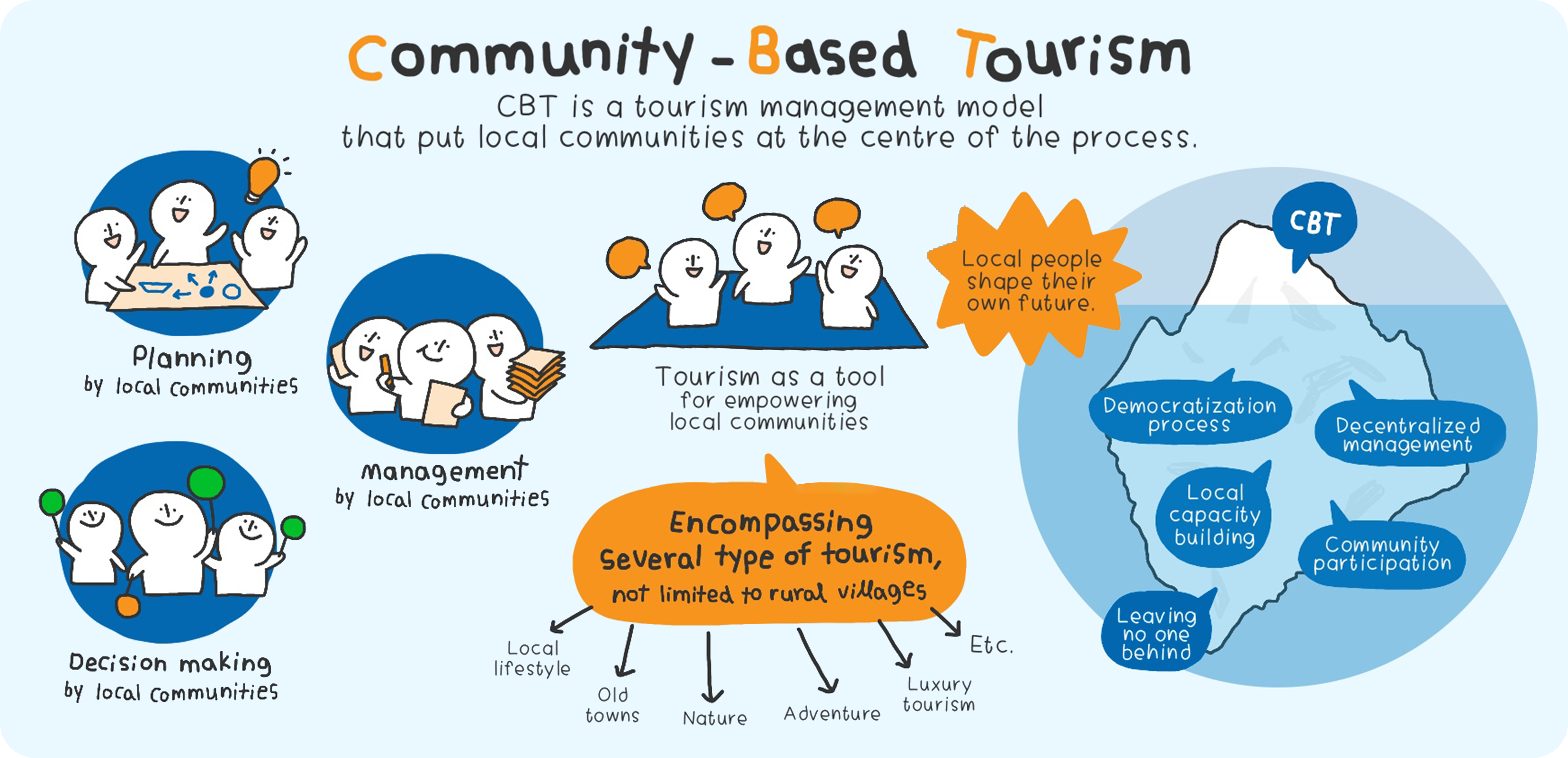
Why community-based tourism?
Emerged in Thailand in the 1990s, ‘community-based tourism (CBT)’ proposes the idea of ‘tourism by the local people for the local people’ . It is one of the solutions for sustainable tourism because, under this framework, local people are the key decision-makers of their tourism development and the ones to fully benefit from it. Being long-term residents of the areas, local communities are more incentivised to balance economic growth and socio-cultural and environmental impacts caused by tourism activities. At the end of the day, it is their home. However, it is crucial to clear the misconception that CBT refers to ‘village tourism,’ limited only to certain styles of tourism that take place in rural areas. CBT is a tourism management model that puts local communities at the center of the process and can encompass diverse tourism styles from rural tourism to urban tourism, nature tourism, or even luxury tourism. Essentially, CBT is about community empowerment as it is a process in which local people are empowered to uplift their own livelihood.
The pandemic has posed both challenges and opportunities for CBT. International travel restrictions caused a major drop in foreign visitors which used to make up a significant portion of visitors for CBT. Local communities needed to adjust themselves to the domestic tourism market and diversify their offers e.g. community products beyond tourism activities. On the other hand, the pandemic has shaped new tourist behaviours- traveling in smaller groups, choosing less crowded destinations, escaping to nature, and searching for unique experiences and activities for well-being, among others. Many of these new preferences match very well with what CBT can offer and can potentially pave way for a golden age of CBT. Moreover, pandemic-induced lockdowns in major cities led to a reverse in rural-urban migration. Many people working in the cities returned to their hometowns during the lockdown and some sought to find livelihood options at home. CBT provides an alternative and in turn benefits from increased human resources- the skilled workforce who have gained skills and exposure from their time working in the cities. All in all, it is an important time for CBT to take the next step to ensure its thrivability in this rapidly changing world.
Making sense of CBT and contemplating on the way forward
As a starting point, national-level workshops were co-organized by UNDP Accelerator Lab Thailand, Thailand Policy Lab, the Designated Areas for Sustainable Tourism Administration (DASTA) , and Local Alike (one of Thailand’s leading social enterprises working on CBT). Representatives from local communities, relevant governmental agencies, the private sector, civil society organizations, and academia exchanged views on trends and weak signals affecting CBT as well as discussed the desirable future and way forward. A few interesting points from the exercise include:
- CBT can go beyond leisure tourism and provide learning experiences for visitors, for example community-based environmental conservation and waste management and tap into opportunities from the rise of corporate social responsibility (CSR) and Thailand’s Bio-Circular-Green (BCG) Economy Model of the government.
- Communities need to build the next generation of CBT leaders. Involvement and incentives for the new generation are key for successful engagement and transition.
- Planning and decision-making should be a bottom-up and collaborative process between the government and local communities to avoid projects which do not fit local contexts or serve the real needs of stakeholders. For instance, many tourism applications were created but abandoned.
- Multisectoral support is crucial for CBT development e.g. support from the private sector on digital transformation, academia on CBT-related curriculum for young leaders, etc.
- Funding mechanisms must be further developed e.g. shifting from an informal arrangement to a social enterprise, setting up CBT development funds, etc.

While the discussion revealed multiple areas for development, capacity building for local communities stood out as one of the prerequisites for success. Since local communities are the main drivers of CBT, they must be equipped with frameworks and tools that will enable them to flourish in the rapidly changing world. Existing capacity-building initiatives have been fairly successful in supporting local communities to begin their CBT journey, often focusing on building the foundation and taking a short/medium-term view. While such emphasis is essential, it might not be sufficient any longer. Especially once local communities manage to set up the basics of their CBT, they also need to start thinking about sustainability and being anticipatory. As a result, the Lab identified this as our area of work: how local communities can make their CBT become more sustainable.
Learnings with the locals
UNDP Accelerator Lab Thailand in collaboration with Local Alike joined hands with two pilot communities to start our learning journey. Social innovation tools were applied to invite local stakeholders to reflect on the becoming of their CBT and look forward through the lens of sustainability. Given the different nature of each community, the discussions and sustainability initiatives took on different directions. However, one commonality revealed itself. Community is never homogeneous; CBT development is an area of convergence for different groups to interact and build momentum toward sustainability. To elaborate, let’s take a closer look at each of the pilot communities…
Chulabhorn Pattana 9 community: A case of nature-based tourism from the South
As a neighbour of the world-famous Hala-Bala Wildlife Sanctuary, Chulabhorn Pattana 9 community of Yala province in Southern Thailand has attracted many nature lovers; some visited the village just to enjoy the serenity and beauty of the natural environment while others were excited by the rich biodiversity of the Hala-Bala Forest, not to mention the village’s charming cultural heritage from their Community Malaya time. The village is familiar with receiving visitors as they have been welcoming relatives and friends from Malaysia and Singapore (legacy of Community Malaya time) for decades. Eight years ago, the concept of CBT was introduced, and the new generation stepped up to lead CBT management. The intergenerational difference is reflected in the different views on tourism management- one hoping to increase the number of visitors while another seeking to keep the delicate balance. The new generation realizes that their main target group is nature lovers. Thus, nature is the main capital for their CBT and its conservation is of paramount importance. Hence, the discussion about limiting the number of visitors with consideration of the area’s carrying capacity was very well received by the CBT management team.
CBT at Chulabhorn Pattana 9 does not only aim to mitigate the negative effects of tourism activities but also inspires positive changes in the local community. In many cases, tourism may have resulted in waste management problems. On the contrary, for Chulabhorn Pattana 9 community, the visitors are the ones demanding that waste in the village needs to be better managed. Hearing these comments, the CBT management team was eager to start a waste management initiative with support from the Lab and Local Alike. Waste separation and organic compost-making have been pioneered by the CBT group and will be shared with fellow villagers to inspire more people to join the effort.
In addition, the CBT management team sought to further develop tourism activities that highlight the value of biodiversity and incentivize conservation. Birdwatching was identified as a viable option. Interestingly, apart from our support, birdwatching was born out of collaboration with a visitor who happens to be a bird expert, an ex-member of the Bird Conservation Society of Thailand. Feeling that Chulabhorn Pattana 9 is more than a touristic destination to him, this bird expert saw the potential and was more than willing to help provide training on birdwatching to local guides. Chulabhorn Pattana 9 is able to shift from selling their services to ‘tourists’ to building relationships with ‘visitors’, some of whom have become ‘friends’ to co-create a sustainable future for their CBT.
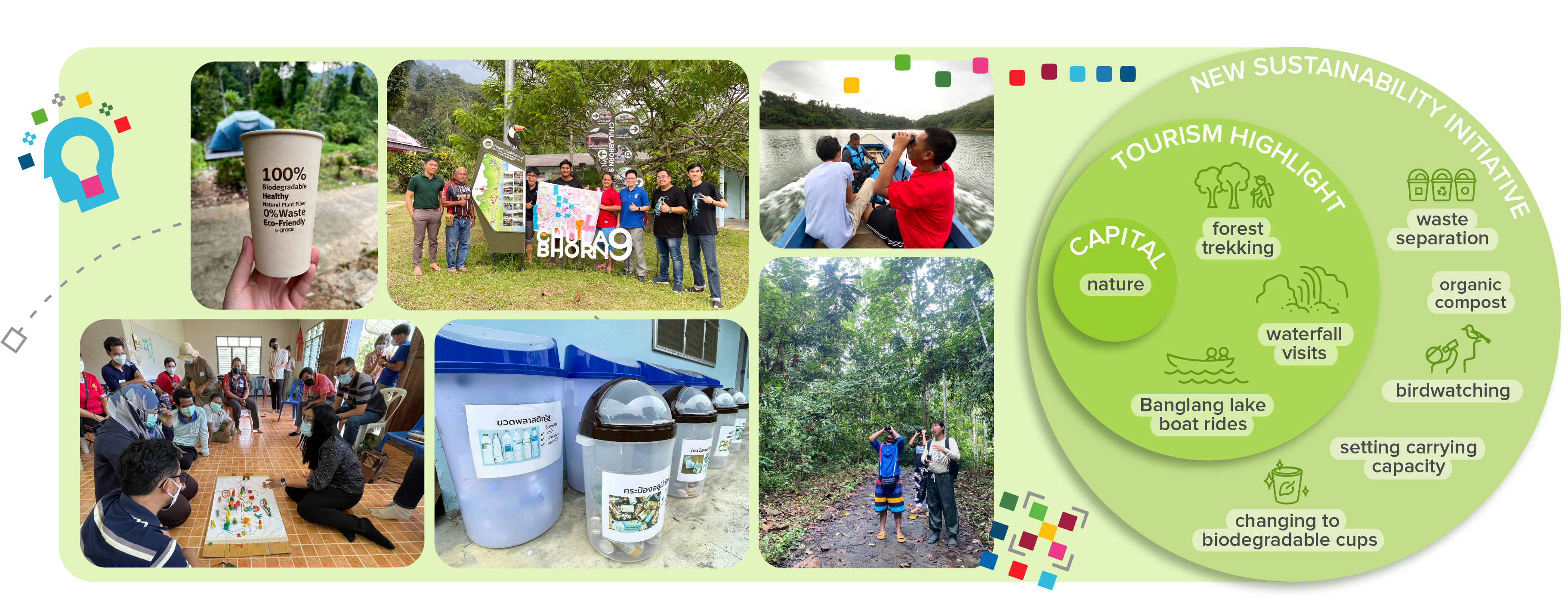
Nong San community: Local life and craft in the Northeast
Nong San community of Sakon Nakhon province in the Northeast of Thailand is famous for its indigo dye handicrafts. Traditional knowledge on indigo dye has been passed on from generation to generation at Nong San village. When combined with the skills of a new generation artist, Pornpimon Mingmitmee, this cultural capital becomes the starting point of Nong San CBT. Visitors, both craft lovers and chillax tourists, enjoy the simple slow life and recharge themselves with natural dye crafts, organic agriculture, and the beauty in the local lifestyle. However, the early days of Nong San CBT were not all easy. The community did not believe that CBT was viable at first, so Pornpimon had to start small and gradually showed other people the success to inspire more support from within the village and nearby community. Furthermore, with the COVID-19-induced lockdown, villagers who used to work in other cities returned to the village and joined force to expand Nong San CBT. However, unlike Chulabhorn Pattana 9 case, Nong San CBT opts for a more decentralized model where each member acts as an independent micro-entrepreneur and loosely connects to provide tour packages for visitors. Therefore, the work here was about business incubation for female micro-entrepreneurs to enhance the distribution of benefits from CBT among the local people. Entrepreneurial skills, including digital marketing, were provided to interested locals.
Circularity is another theme as Pornpimon has been trying to manage waste materials from textile crafts production e.g. left-over threads and fabric scraps. Drawing inspiration from India, the initial idea was to turn textile waste into paper. Local knowledge in Thailand provides a technique for turning natural fibers into handmade paper. Yet, from the prototyping phase, cotton textile waste has proven to be more difficult to handle than other fibers. An alternative was presented as Pornpimon connected with a company working on recycled textiles. The idea is to compile textile waste from the local community, turn it into recycled fabrics, and send it back to the community as raw materials for new products. At the time of writing, the discussion is still ongoing to develop a suitable model of collaboration. This case demonstrates the power of cross-sectoral collaboration in driving CBT toward sustainability.
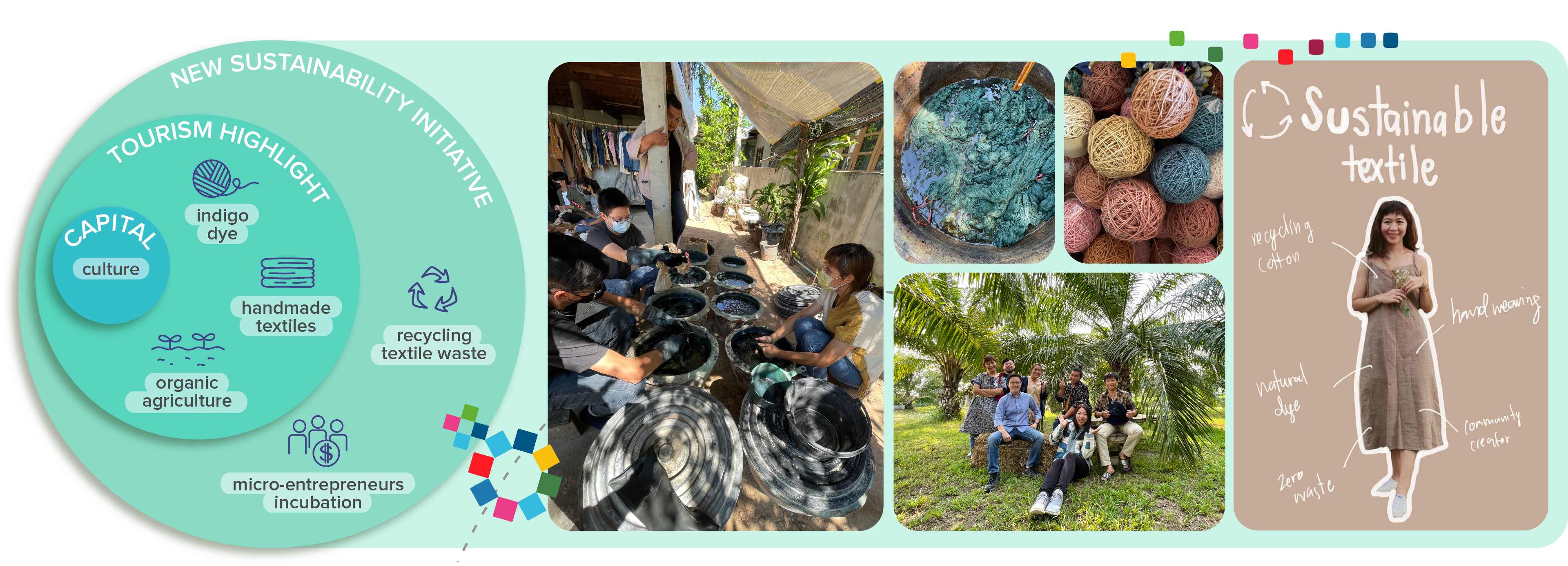
Sharing our experiences
Through the working process with our partners, UNDP Accelerator Lab Thailand was able to learn about CBT development as well as share our social innovation tools with key change agents like Local Alike and relevant governmental agencies. Realizing the value of these tools in facilitating processes towards sustainability and resilience, the Lab together with Local Alike co-produced the Community-Based Tourism Social Innovation Playbook to share with others the experience of Thailand. The Playbook emphasized that social innovation process is not linear. While the tools are categorized into three groups (making sense of the past and present; looking forward to the future; and taking actions), users can always jump back and forth between each category of tools to fill the gaps of knowledge as they surface. Case studies from our work with Chulabhorn Pattana 9 and Nong San communities demonstrate this non-linear journey as well as the fact that no two communities are alike; thus, the social innovation tools must be ultilized in consideration of specific local contexts.
In addition to the publication, the Accelerator Lab Thailand will be working with the Accelerator Lab Bangladesh on CBT development in their context. Follow our next blog to see how Thailand’s experiences can be adapted and what lessons we will learn on the journey to transform tourism into a vehicle for sustainable development.
- Why We’re Different
- Join Our Team
- Strategic Alliances
- Why Tourism
- Strategic Planning
- Tourism Development
- Workforce Development
- Destination Management
- Destination Marketing
- Solimar DMMS
- Creative Portfolio
- Testimonials
- Tourism for Development Blog
- Case Studies
- Useful links

What is Community-Based Tourism and Why Does it Matter?
Written by Ece Zivrali on July 13, 2022 . Posted in Uncategorized .
Community-based tourism is one of the most significant parts of the tourism industry and key to destination sustainability. Despite their importance, communities are often neglected in tourism. Many tourism destinations overlook local peoples, or at best use them as gimmicks and labor for foreign visitors. Instead, tourism should serve as a tool to improve destination development and locals’ quality of life.
What is a community and what does it mean for tourism?
A community is defined as individuals living in the same region with common interests and interactions. However, community means more than sharing the same physical environment – many social-cultural factors are in play to create a community. In tourism, a community encompasses anyone living in a destination and is affected by tourism, either directly or indirectly.

The importance of communities in tourism destinations
What is community-based tourism.
Community-based tourism falls under the umbrella of sustainable tourism . It aims to involve communities in aspects of tourism, ranging from planning to active participation. Community-based tourism seeks to support communities through tourism activities, and aims to offer tourists an authentic local experience. Solimar International has developed a CBT project in Timor-Leste.
In contemporary tourism planning, especially in developing countries, the voices of local residents often go unheard. Community empowerment aims to create dynamic and self-sufficient communities that will make decisions for their own well-being.
Unfortunately, a lack of sustainable planning in tourism ventures can create adverse effects in local communities. Community-based tourism aims to incorporate sustainability efforts and reduce the negative impacts of tourism, both on the environment and the residents of destinations.

What are the potential negative impacts of tourism on communities?
When done thoughtfully with stakeholders in mind, tourism is hugely beneficial to communities. There are many reasons why it is important to measure the negative impacts of tourism. To better understand the importance of thoughtful community-based tourism, let’s look at some of the potential negative impacts of tourism on communities.
1. Economic Leakage and Higher Prices
Tourism greatly influences communities in developing countries, especially those that take in large amounts of foreign currency. The profit generated from tourism–if not used to benefit communities–can create revenue leakage, and may lead to inflation in the destination, making it hard for locals to gain or keep economic independence.
2. Dependence on Tourism
Communities become economically vulnerable when tourism is their main source of income. They can become dependent on foreign visitors and have difficulty sustaining their economy during off-seasons.
3. Commercialization of Traditions and Customs
Especially with regard to mass tourism, local peoples and their cultures have become marketing assets for tourism profit. Instead of preservation, local traditions and customs are commodified and used as tools to attract more tourists.

4. Cultural Deterioration
Interaction between locals and visitors can cause cultural clashes, and the rapid changes caused by an influx of tourism may agitate a community’s harmony and disrupt traditional living.
5. Environmental Damage
Tourism can also cause harm to the environment, leading to losses of natural resources and biodiversity, as well as general deterioration of the local biosphere as a whole.
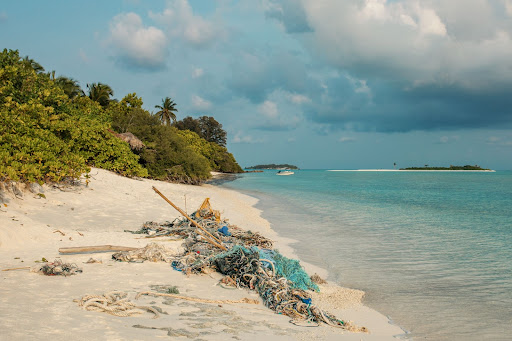
Why is community important for sustainable tourism?
For a destination to be sustainable, tourism’s adverse economic, environmental, and social impacts should be limited. Local communities are motivated to minimize negative impacts to their homes in order to continue living in them, which is why community inclusion in the tourism sector is essential for sustainability.
1. A Self-sustained and Locally Managed Economy
Community-based tourism ensures locals make their own decisions and keep the money within their community. As a result, communities become self-sustainable. The funds created by tourism activities stay within the community and are used for its own good.
2. Going Back to Basics: Local knowledge for preservation and sustainability
Locals know how to maintain and protect their land. They are permanent residents, and they care about their environment. Locals also hold knowledge beyond what tourism professionals can provide. They know what is appropriate or not for their environment. Local involvement ensures tourism sustainability. Locals are trained to protect and sustain their environment for themselves and future touristic activities.
3. Active Participation and Community Involvement
In community-based tourism, locals actively participate in the tourism decision-making process, which causes communities to gain confidence and their voice to be heard. It is important to include communities for sustainability, as community decisions have more considerable impacts than that of individuals.
4. Increased Value and Protection of Local Culture
Community-based tourism is also essential for cultural preservation. The publicity of local cultures encourages locals to value and preserve their traditions and culture.
What are the benefits of community-based tourism to travelers?
Community-based tourism not only benefits locals, but also travelers.
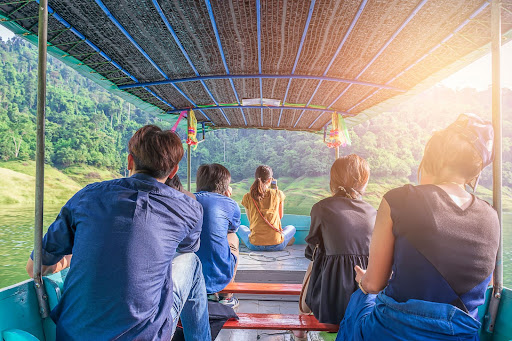
H ere are some benefits of community tourism for travelers:
1. experiencing the authentic culture.
Community-based tourism gets closer to the community and the authentic culture. While a coach tour stops in a local village to buy handicrafts, community-based tourism involves tourists with the community and its lifestyle, which is a two-way interaction. Community-based tourism moves from the stereotypical, commercialized part of tourism to a genuine experience.
2. Unique Locations
Community-based tourism includes locations that mass tour operators may not prefer. It involves unique experiences and culturally dense areas fed by local knowledge.
3. Ethical Awareness and Responsible Traveling
Community-based tourism aims to provide opportunities for travelers to help locals. Tourists will know that their money is used for a good reason – the development of the destination. They will also leave knowing they have left a positive footprint.
4. Warm Welcome by Locals
Tourists have an unforgettable experience when they feel welcomed by locals. Community-based tourism puts importance on communities and tourists’ relationship with locals. Locals’ attitude is one of the leading influencers of why people prefer to travel to a destination.

C onclusion
In short, tourism has a significant influence on communities, especially in developing countries. Most tourism destinations ignore locals and use them as a tool to attract more tourists.
To the contrary, community-based tourism includes locals in every part of the tourism planning and managing process. Locals learn to be active participants. They build value and confidence, improve their knowledge, and interact with tourists, which creates mutual understanding and learning. The more locals feel supported by tourism, the more they support and further tourism, which favors destination sustainability and protection of the culture and its values. Community-based tourism helps locals when traveling to a destination. It is a win-win situation for everyone involved in tourism.
Interested in how we can help you with community-based tourism? Contact us to learn more.
Tags: community based tourism , community tourism , costa rica tourism , negative tourism , sustainable tourism , thai tourism

Destinations
Popular destinations, discover lapland.

From husky rides through pristine frozen forests to excursions into the Polar night to view the Northern Lights, discover unforgettable Lapland holidays.
Take Me There
Discover Europe
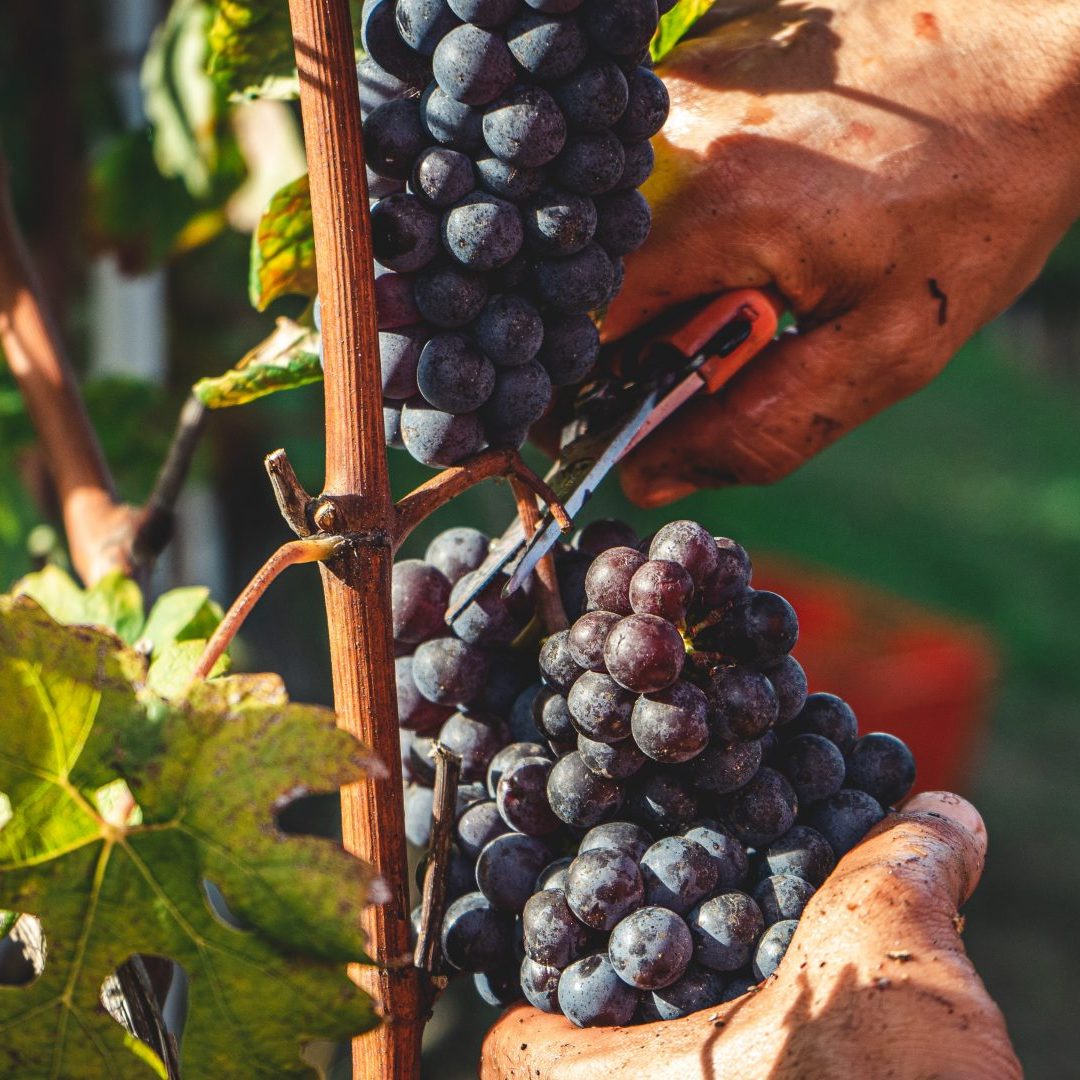
Whether it’s the bustling streets of Naples or the lush vineyards of Tuscany, prepare to be enchanted by Italy’s culture, cuisine, and magical scenery.
Central & Latin America
Discover costa rica.

Discover volcanos, jungle, beaches, world class wildlife and the concept of Pura Vida on adventures in the tropical land of Costa Rica.
Discover Kenya
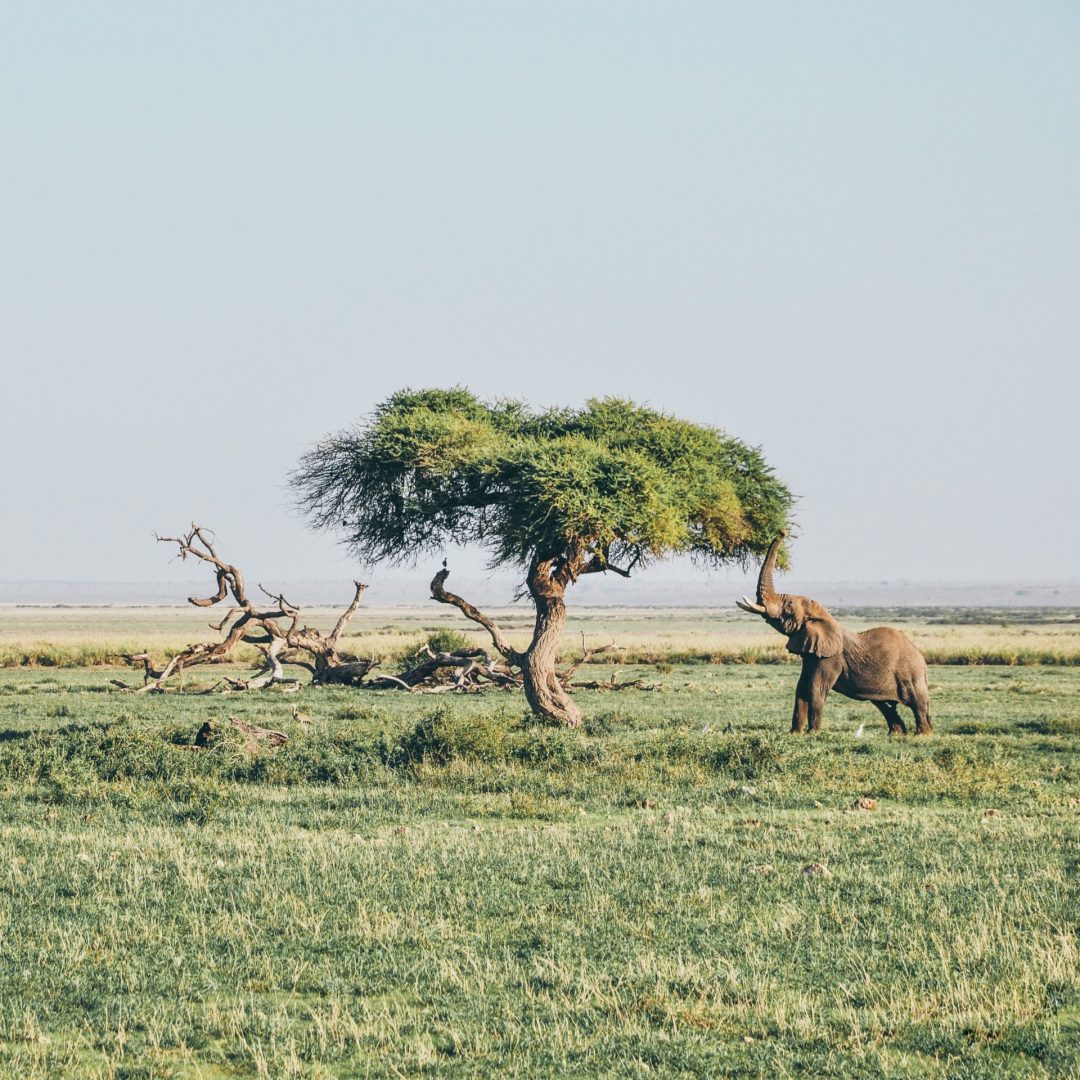
As well as one of the top destinations on earth for safari, Kenya also hosts incredible mountain ranges and beautiful Indian Ocean beaches.
Discover Cambodia

Ancient temple complexes, magical white-sand beaches and jungles dotted with cool waterfalls, Cambodia is not one to miss.
Experiences
Experience collections.
Drive Iceland's Ring Road
Island Hopping in Greece
4 Night Family Lapland Adventure
Snowshoeing Adventure in the Pyrenees
Discover The Best Of Costa Rica
Thailand Off The Beaten Track Adventure
Discover our experiences
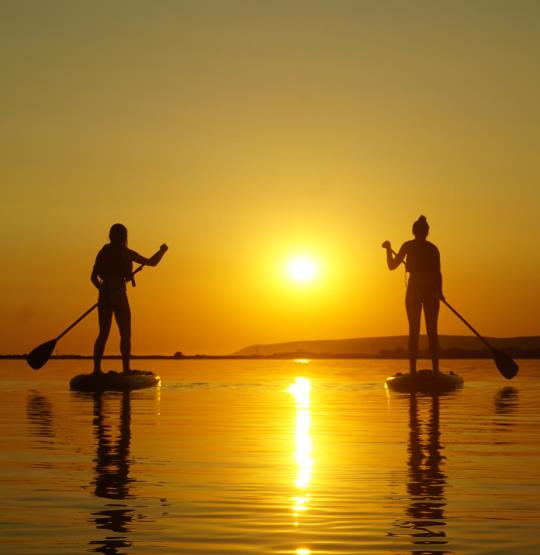
From winter sun escapes in the Maldives to bucket list adventures in Peru, explore our experience collections of local authentic experiences.
Take me there
Off the Beaten Track Holidays
Costa rica east to west.
Highlights Of Southern Peru
Experience The Real Maldives
The Best Of Uganda: Wildlife Safari
The Ultimate Cultural Morocco Tour
Bangkok To Beaches: Thailand Off The Beaten Track
Hanoi To Ho Chi Minh: Ultimate Vietnam In 14 Days
Sri Lanka: Immersive Adventure Country And Coast

Not In The Guidebooks adventures take you to the places other tourists miss – explore our offbeat, authentic and local itineraries here.
Foodie Holidays
Cooking in Italy
Cooking in France
Cooking in Spain
Food Adventures in England
Food Adventures in France
Food Adventures in Italy
Wine in France
Wine in Italy
Wine in Spain

We find that the fastest route to the heart of a culture is through its cuisine. Whether that’s cooking in Italy or exploring markets in Vietnam.
Creative Holidays
Painting in France
Painting in Spain
Painting in Italy
Arts and Crafts in France
Arts and Crafts in Italy
A Creative Week in Spain
Photography in France
Photography in Italy
Photography in Spain

For a holiday that creates more than memories, explore our range of painting, photography, and art & crafts holidays.
Active Holidays
Walking in Ireland
Walking in Spain
Walking in Portugal
Horse Riding in Italy
Horse Riding in Morocco
Horse Riding in Spain
Surfing in Costa Rica
Surfing in England
Surfing in Portugal
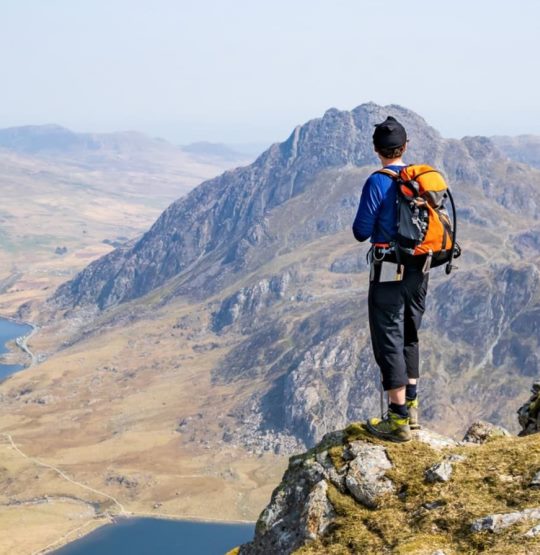
The best way to explore a landscape is to immerse yourself in it on an adventure, whether hiking the Spanish Pyrenees or kayaking in Montenegro.
Singles Activity Holidays
Cookery Holidays in France
Cookery Holidays in Italy
Cookery Holidays in Spain
Wellness Holidays in Costa Rica
Wellness Holidays in Italy
Wellness Holidays in Portugal
Creative Holidays in England
Creative Holidays in France
Creative Holidays in Spain
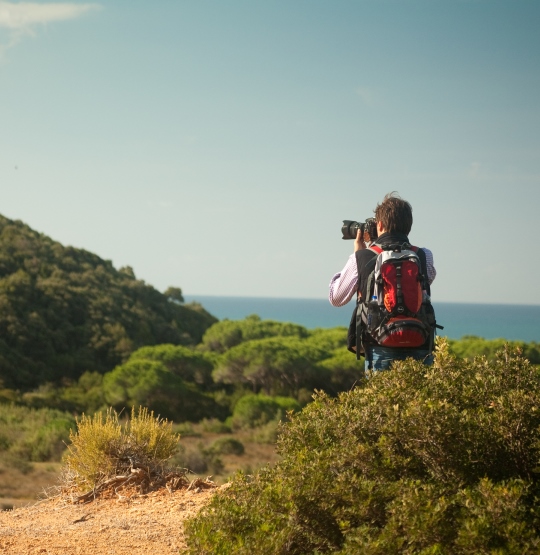
Explore the world on your terms by meeting like-minded travellers who share your passion for discovering new places and experiencing new cultures.
Wellness Holidays
Wellness Holidays in Wales
Wellness Holidays in Spain
Yoga Holidays in Costa Rica
Yoga Holidays in Italy
Yoga Holidays in Portugal

Take the opportunity to refresh, recharge and revatilise on a wellness holiday that also takes you to experience a new culture.
Wildlife Holidays
Wildlife Holidays in Costa Rica
Wildlife Holidays in Cambodia
Wildlife Holidays in Uganda
Wildlife Holidays in Kenya
Wildlife Holidays in Namibia

From the Masai Mara to Corcovado National Park, with NITGB you can witness some of the most spectacular wildlife on earth in a responsible manner.
Unique Accommodation
Glamping Accommodation in England
Glamping Accommodation in Wales
Hot Tub Accommodation in England
Hot Tub Accommodation in Wales
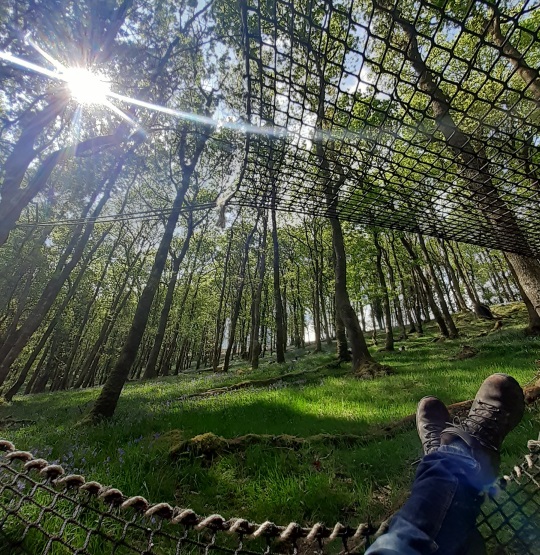
Discover unique accommodation that turns an ordinary weekend escape into a memorable, offbeat experience, whether in the UK or further afield.
- Call +44-203-048-3044 Agent login
Empowering Communities: Unveiling the Essence of Community-Based Tourism
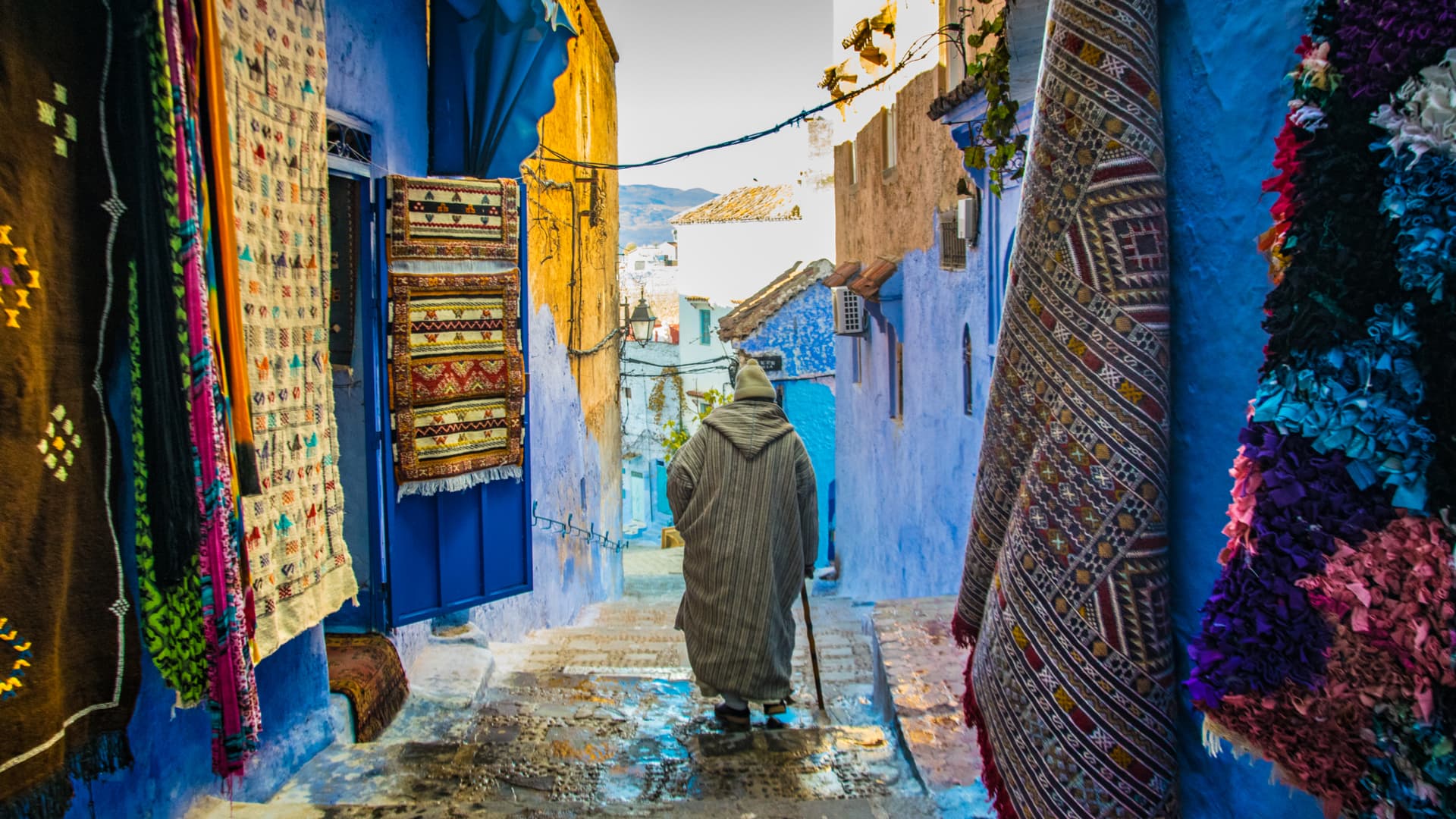
In an era of mass tourism, where destinations are often overshadowed by overcrowded attractions and commercialization, a growing movement is seeking to redefine the travel experience. This movement lies close to the heart of Not In The Guidebooks , in that our entire approach to travel centres around the concept of community-based tourism, but what exactly it?
Community-based tourism (CBT) is emerging as a transformative approach that not only enriches the traveller’s journey but also empowers local communities. In this article, we will delve into the essence of community-based tourism, exploring its principles, benefits, and the profound impact it has on both travellers and the destinations they visit.
Understanding Community-Based Tourism
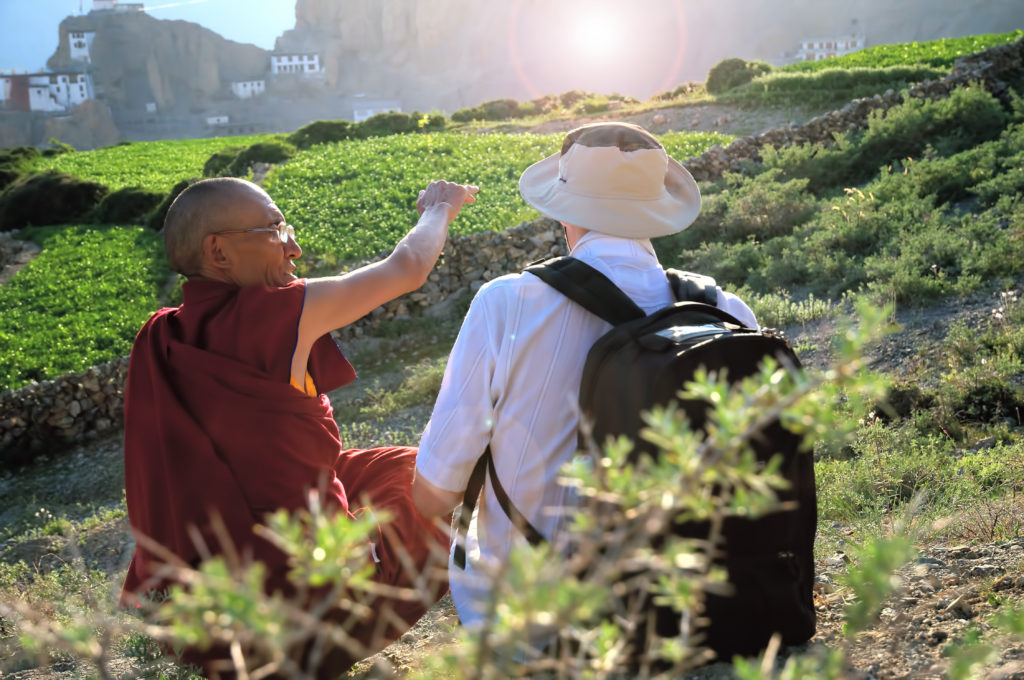
At its core, community-based tourism is a sustainable and participatory travel model that places local communities at the forefront of the tourism experience. Unlike traditional tourism, where large corporations dictate the narrative, CBT is a collaborative effort that involves the active participation of the community in the planning, development, and management of tourism activities.
For example, on an experience with Not In The Guidebooks , your holiday will have been designed and driven by a local supplier in the community you are visiting. This means that the money you spend, the places you visit and the people you meet will have a vested interest in supporting and protecting their locality, resulting in a more authentic experience for yourself, and a more beneficial type of tourism for the community.
Principles of Community-Based Tourism
Cultural Respect and Preservation: CBT emphasizes the preservation of local cultures and traditions. Visitors are encouraged to engage respectfully with the community, fostering a mutual exchange that celebrates diversity.
One of the most important parts of travel, in our opinion, is exposing yourself to different cultures and other ways of life, broadening your horizons as you explore. When tourism dilutes a culture and panders to the wants and needs of the influx of visitors, this aspect is lost.
With CBT, the tourism enterprises with the local community in mind will strive to protect these local cultures and traditions, keeping a place both with its cultural identity and its place as a desirable destination for travellers looking to enrich themselves in a new environment.
Economic Empowerment : One of the primary goals of CBT is to empower local economies. By involving community members in tourism-related activities, such as homestays, guided tours, and artisan workshops, CBT channels financial benefits directly to the people who call the destination home.
With Not In The Guidebooks, all our experiences and holidays are created by locals, meaning that when you pay for an NITGB experience, your money goes directly to that local economy.
Whether it’s a wildlife holiday in Costa Rica or a cooking holiday in Italy , you will be supporting numerous independent, local enterprises, rather than simply spending the vast majority of your money with a large global chain.

Environmental Sustainability: Community-based tourism often prioritizes environmentally friendly practices. From responsible waste management to the promotion of eco-friendly transportation options, these initiatives contribute to the long-term health of the destination.
This is because, as locals, the individuals involved with running the tourism industry in their area will clearly favour sustainable practices that keep their homes pristine and undamaged by tourism.
This is especially true of destinations where natural environment plays a large role in attracting tourists. Overtourism leads to a damaged environment, which then leaves the entire region a less attractive proposition to new tourists, eventually leading to a downturn in the local economy.
Empowering Communities: CBT seeks to empower local communities by involving them in decision-making processes. This empowerment leads to a sense of ownership over the tourism activities, fostering pride and a commitment to sustainable development.
In many popular tourist destinations, the local population can feel alienated from the impact of tourism on their traditional ways of life, which can lead to tension between travellers and residents who don’t feel as though the tourism industry is serving the community, rather it seems to simply serve tourists alone.
With CBT, decision makers can establish mutually beneficial relationships between visitors and locals, making tourism and travel benefit both parties.
Popular Responsible Experiences
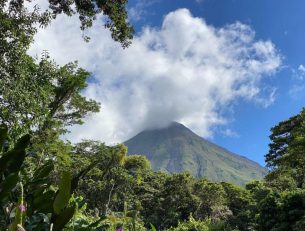
Sed ut perspiciatis unde omnis iste natus error sit voluptatem...
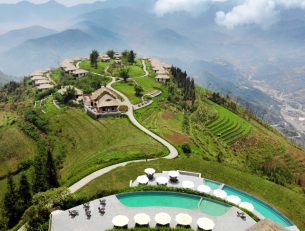
Local Trail Walking and Eco Retreat – North Vietnam

Luxury Icelandic Eco Retreat

6 Days in Temple Town – Angkor, Elephants and Tonle Sap
Benefits of community-based tourism:.
Authentic Experiences: Travelers engaged in community-based tourism enjoy authentic and immersive experiences. They have the opportunity to connect with locals on a personal level, gaining insights into daily life that go beyond the surface.
So many travellers end up leaving a country without having got in touch with where they have visited. Whilst there is a place for a beach holiday that could realistically be in hundreds of different locations around the world, we feel this is missing the point in travelling to a new destination.
When travellers experience community-based tourism, they get in touch with the local culture and experience tradition, creating a more memorable and enriching trip.
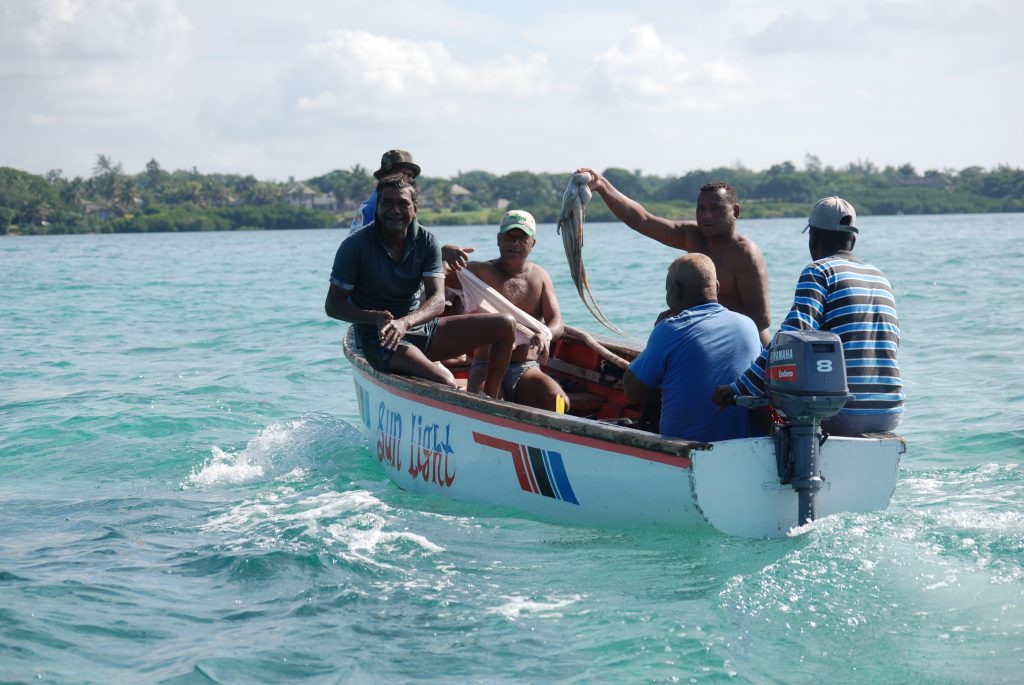
Cultural Exchange: CBT facilitates genuine cultural exchange between visitors and locals. This exchange fosters understanding, breaking down stereotypes, and creating a more interconnected world.
To us at Not In The Guidebooks, this is one of the most important aspects of travel. We believe that travel can create a sense of empathy and understanding in the individuals who partake in it, and that is why we are such huge supporters of CBT as a concept.
Sustainable Development: By placing community well-being at the forefront, CBT contributes to the sustainable development of destinations. Tourism revenues are reinvested in local infrastructure, education, and healthcare, ensuring a positive impact on the community’s overall quality of life.
Preservation of Heritage: The preservation of cultural and natural heritage is a central tenet of CBT. This ensures that future generations can continue to benefit from and appreciate the unique aspects of their community.
It also means, as we discussed earlier, that unique cultures and ways of life that often attract visitors in the first place are left intact, as opposed to the dilution of culture due to mass tourism.
Community-based tourism is a powerful force for positive change in the travel industry. By shifting the focus from profit-driven enterprises to community-driven initiatives, CBT offers a blueprint for a more sustainable and meaningful approach to travel. As travellers, we have the opportunity to be conscious participants in this movement, choosing experiences that not only enrich our lives but also contribute to the well-being of the communities that generously open their doors to us.
You might also be interested in...

Can Flying Ever be Sustainable?
As a travel company, we can’t ignore that flying is an integral part of what we promote and sell, and we can’t ignore that flying produces a huge amount of carbon. As a company that promotes sustainability however, we need to ask ourselves: can flying ever be sustainable? Can we,... Read More »
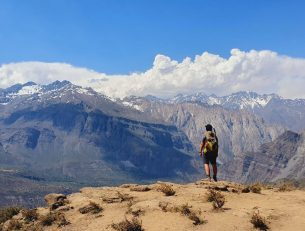
A Travellers’ Guide to Treading Lightly
Now more than ever, we’re made explicitly aware of our roles in the fight against climate change, whether that’s buying an electric car, ensuring we recycle our rubbish properly, going vegan, or simply turning the light off when we leave a room. But we find many travellers aren’t fully aware... Read More »

What is Ecotourism and Why is it So Important?
Ecotourism is finding itself more and more centre stage in the tourism industry, as companies and travellers alike start to realise its importance. It’s a concept that is absolutely essential in today’s world where tourism, if done poorly and irresponsibly, can have devastating effects on local and global environments. Here... Read More »

How Can Tourism Combat Climate Change?
Whether it’s a skiing holiday on snow-capped Alpine mountains, a winter sun excursion on white-sand beaches in the Caribbean, or even a whale watching experience off the coast of Iceland, the tourism industry is inextricably linked to climate. As a concept, it relies heavily on the natural wonders and various... Read More »

Join our community
Get off the beaten track and support local communities that you visit.
Sign up for inspiriation for your itinerary, new experiences and special offers.
Community-based tourism
- Reference work entry
- First Online: 01 January 2016
- Cite this reference work entry

- Heather Mair 3
195 Accesses
Community-based tourism is both an idea about and an approach to the development and planning of tourism. Its notion rests on the assumption that the success (and sustainability ) of tourism requires the involvement of those who are affected by the development. Approaches to community-based tourism consider how and why those who are affected by tourism are (or should be) involved in its development. Broadly speaking, community-based tourism takes as its starting point a concern with the needs and desires of members of the host community.
Interest in community-based approaches to tourism development began as a response to concerns about the impacts of the industry on the social, environmental, political, and economic aspects of the host community. As Murphy ( 1985 ) and others have argued, tourism that is not supported by the local residents cannot last. While Murphy is often credited with making one of the most influential arguments for taking into account the views of members of...
This is a preview of subscription content, log in via an institution to check access.
Access this chapter
- Available as PDF
- Read on any device
- Instant download
- Own it forever
- Available as EPUB and PDF
- Durable hardcover edition
- Dispatched in 3 to 5 business days
- Free shipping worldwide - see info
Tax calculation will be finalised at checkout
Purchases are for personal use only
Institutional subscriptions
Blackstock, K. 2005 A Critical Look at Community Based Tourism. Community Development Journal 40:39-49.
Article Google Scholar
Bramwell, B. 2004 Partnerships, Participation, and Social Science Research in Tourism Planning. In A Companion to Tourism, A. Lew, C. Hall and A. Williams, eds., pp.541-554. Oxford: Blackwell.
Google Scholar
Friedmann, J. 1987 Planning the Public Domain: From Knowledge to Action. Princeton: Princeton University Press.
Mair, H., and D. Reid 2007 Tourism and Community Development vs. Tourism for Community Development: Conceptualising Planning as Power, Knowledge and Control. Leisure/Loisir 31:403-426.
Murphy, P. 1985 Tourism: A Community Approach. London: Methuen.
Okazaki, E. 2008 A Community-based Tourism Model: Its Conception and Use. Journal of Sustainable Tourism 16:511-529.
Tosun, C. 2000 Limits to Community Participation in the Tourism Development Process in Developing Countries. Tourism Management 21:613-633.
Download references
Author information
Authors and affiliations.
Department of Recreation and Leisure Studies, University of Waterloo, 200 University Avenue West, Waterloo, N2L 3G1, ON, Canada
Heather Mair
You can also search for this author in PubMed Google Scholar
Corresponding author
Correspondence to Heather Mair .
Editor information
Editors and affiliations.
University of Wisconsin-Stout, Menomonie, USA
Jafar Jafari
The Hong Kong Polytechnic University, Hong Kong, China
Honggen Xiao
Rights and permissions
Reprints and permissions
Copyright information
© 2016 Springer International Publishing Switzerland
About this entry
Cite this entry.
Mair, H. (2016). Community-based tourism. In: Jafari, J., Xiao, H. (eds) Encyclopedia of Tourism. Springer, Cham. https://doi.org/10.1007/978-3-319-01384-8_32
Download citation
DOI : https://doi.org/10.1007/978-3-319-01384-8_32
Published : 25 June 2016
Publisher Name : Springer, Cham
Print ISBN : 978-3-319-01383-1
Online ISBN : 978-3-319-01384-8
eBook Packages : Business and Management Reference Module Humanities and Social Sciences Reference Module Business, Economics and Social Sciences
Share this entry
Anyone you share the following link with will be able to read this content:
Sorry, a shareable link is not currently available for this article.
Provided by the Springer Nature SharedIt content-sharing initiative
- Publish with us
Policies and ethics
- Find a journal
- Track your research
UN Tourism | Bringing the world closer
Share this content.
- Share this article on facebook
- Share this article on twitter
- Share this article on linkedin
Guidelines for Community-based Tourism
- All Regions
Related Content
Unwto briefing paper “towards measuring the economic va..., vikings along the silk road, unwto silk road training and capacity building programme, western silk road university challenge.

Passing Thru Travel
Venture Beyond: 10 Inspiring Expeditions Into Community-Based Tourism Projects
Posted: February 27, 2024 | Last updated: February 27, 2024

Travel today transcends traditional sightseeing, evolving into a more immersive and impactful experience. Community-based tourism projects offer a unique opportunity to engage with local communities, understand their culture, and contribute positively to their development.
This guide explores various destinations where you can participate in and support these initiatives. From helping with conservation efforts in Africa to learning traditional crafts in Southeast Asia, each project allows you to connect deeply with local cultures while supporting sustainable tourism practices.
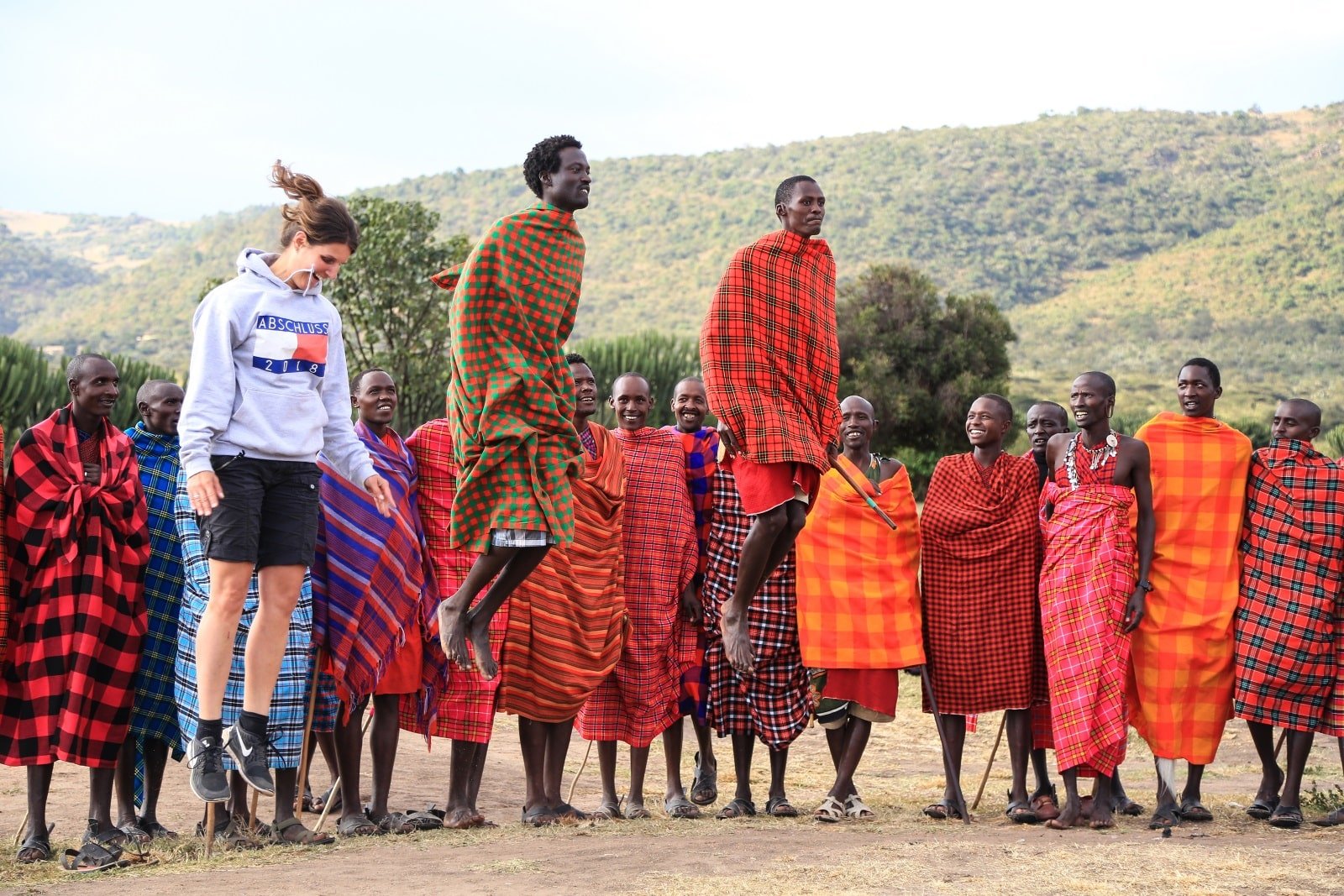
1. Conservation Efforts in Kenya
In Kenya, community-based tourism takes a front seat in wildlife conservation efforts. Projects like the Maasai Mara Wildlife Conservancies involve local communities in protecting the region’s iconic wildlife. As a visitor, you can participate in guided safaris led by local Maasai guides who share their in-depth knowledge of the ecosystem.
Your visit contributes to the conservancies’ efforts to protect species like lions, elephants, and rhinos. Additionally, many of these projects offer cultural experiences, such as village visits and traditional dance performances, providing a holistic understanding of the Maasai community’s way of life.
Insider’s Tip: Opt for lodges or camps that are part of the conservancy program, ensuring your stay directly benefits local conservation efforts.
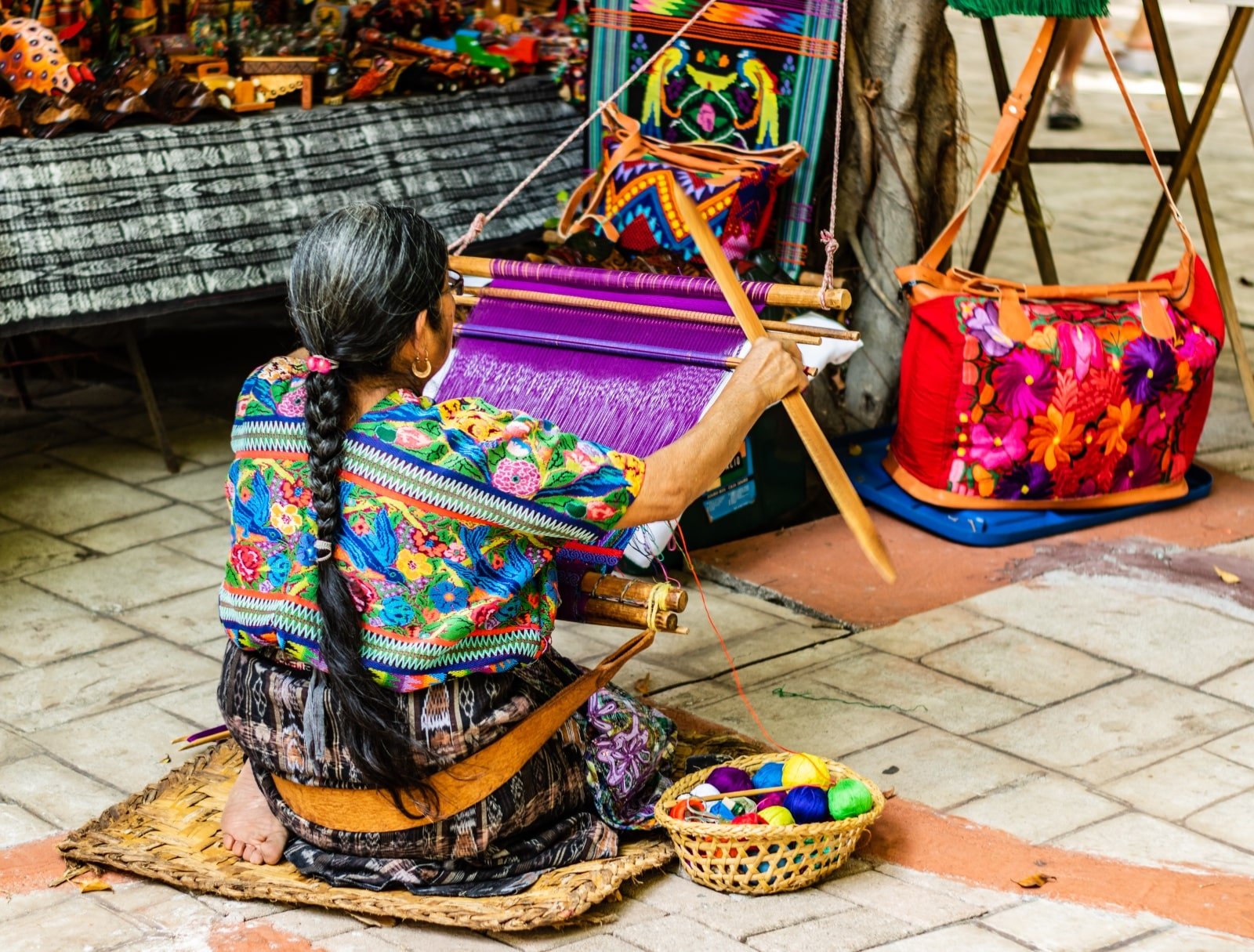
2. Traditional Weaving in Guatemala
Guatemala has many community-based tourism projects focus on preserving traditional arts and crafts. Towns like San Juan La Laguna on Lake Atitlán are known for their textile cooperatives. Here, you can learn about the art of weaving from local artisans, understanding the significance of their traditional techniques and patterns.
Participating in these workshops provides you with a unique souvenir and supports the artisans and their craft. These cooperatives often use natural dyes and sustainable practices, making your participation a support for eco-friendly initiatives.
Insider’s Tip: Engage with the artisans, ask questions about their craft, and purchase directly from them to ensure they receive fair compensation.
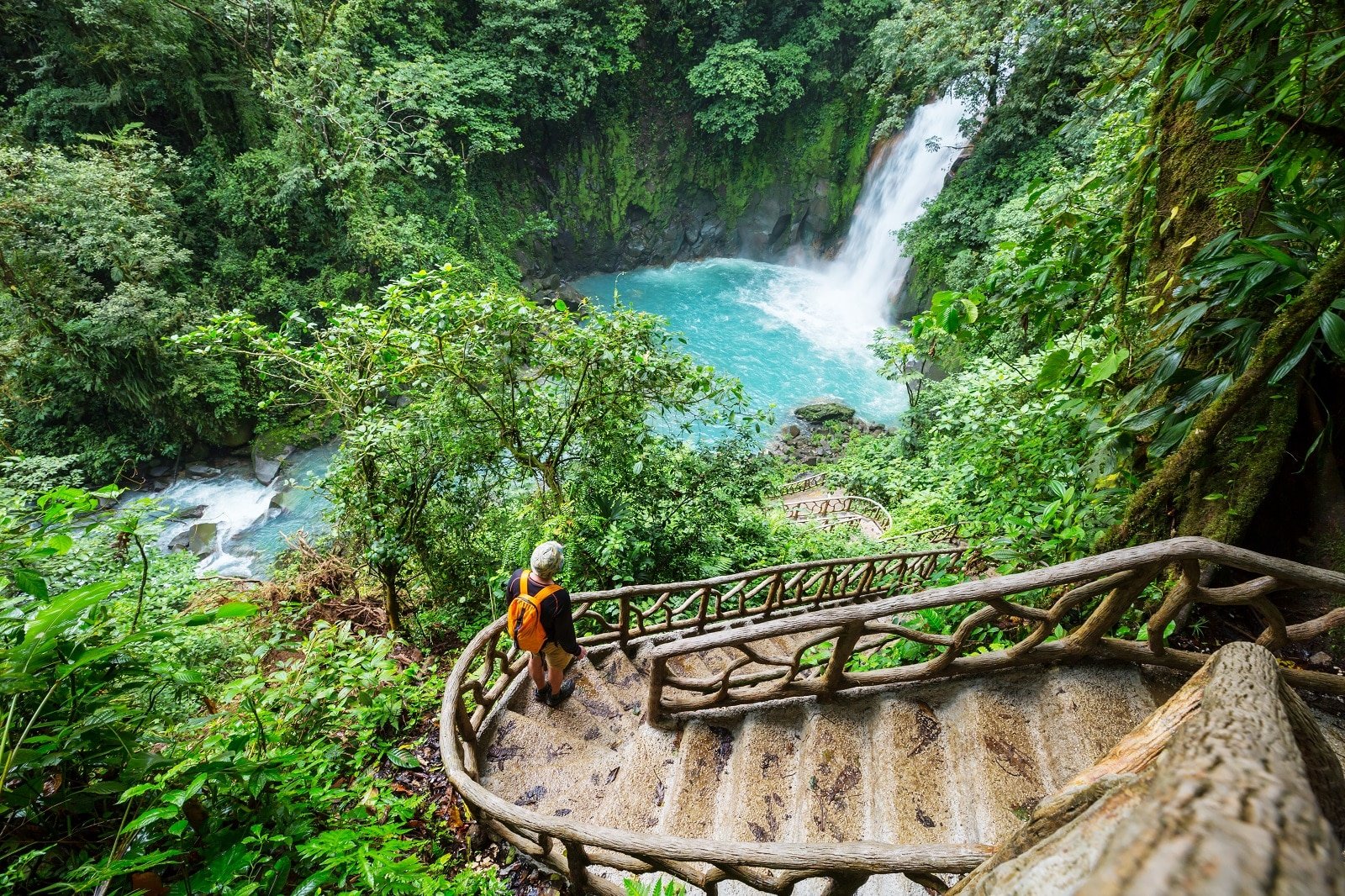
3. Eco-Tourism
Costa Rica, a pioneer in eco-tourism, offers a plethora of community-based tourism projects that focus on environmental sustainability. In areas like Monteverde and Tortuguero, local communities are deeply involved in preserving their unique ecosystems. You can participate in guided rainforest hikes, wildlife spotting tours, and even sea turtle conservation programs.
These experiences are led by local guides who provide invaluable insights into the biodiversity and conservation efforts of the region. Your participation in these tours enhances your understanding of environmental conservation and directly contributes to the livelihoods of local families and the protection of natural habitats.
Insider’s Tip: Choose tours and accommodations that are certified by the Costa Rican Tourism Board for their sustainability practices.
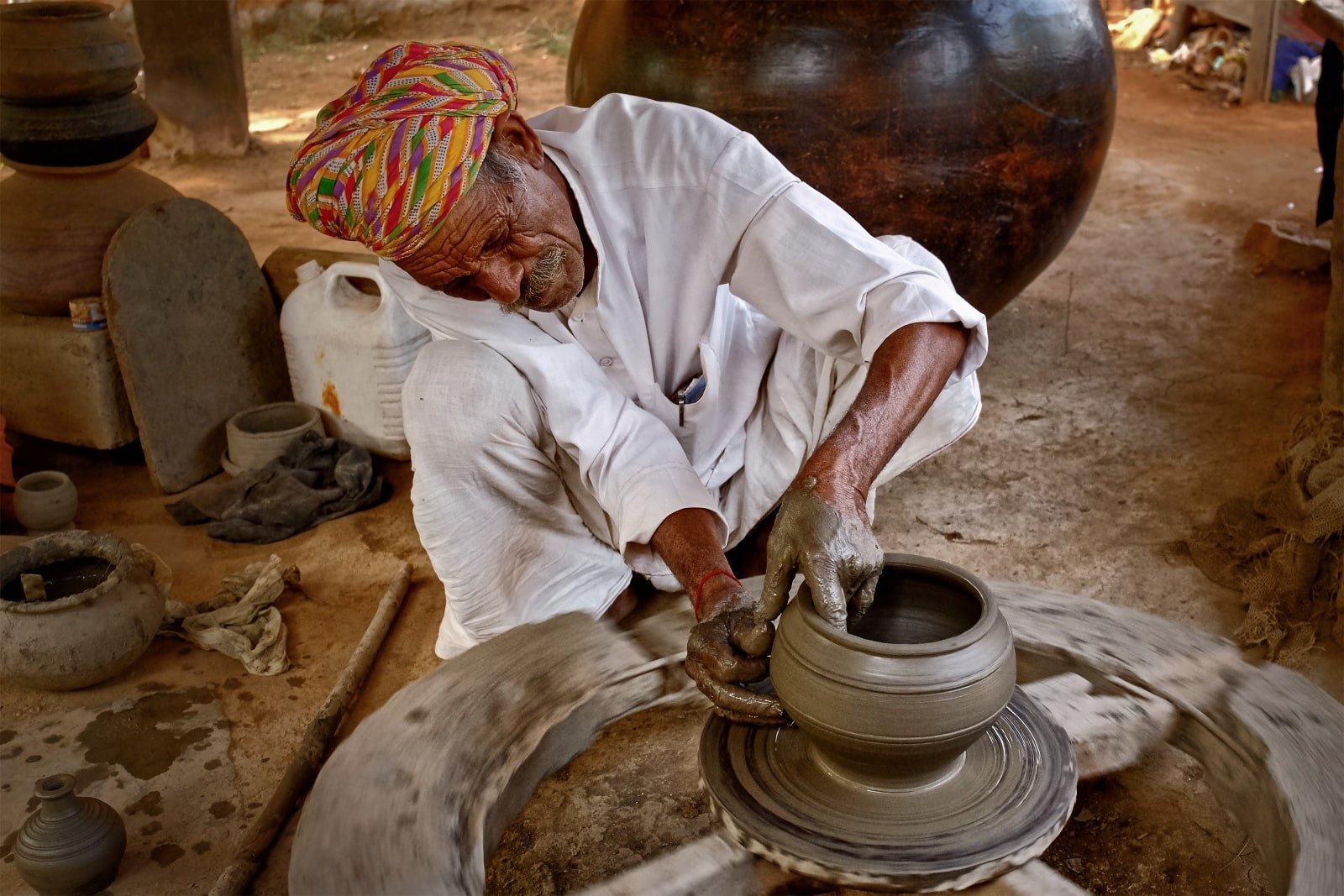
4. Cultural Immersion in Rajasthan, India
Rajasthan, India, offers a rich tapestry of community-based tourism experiences that allow for deep cultural immersion. Projects in villages like Chandelao and Barli enable visitors to experience the rural lifestyle of Rajasthan. You can participate in activities like cooking classes, traditional craft workshops, and village walks.
The locals curate these experiences, offering an authentic glimpse into their daily lives and traditions. By engaging with these communities, you enrich your travel experience and contribute to the local economy and the preservation of cultural heritage.
Insider’s Tip: Respect local customs and dress modestly during village tours and home visits.

5. Agro-Tourism in Tuscany, Italy
In Tuscany, Italy, agro-tourism is a growing trend where travelers can participate in sustainable farming practices. Local farms offer experiences like grape harvesting, olive picking, and cheese making. These activities provide an insight into the region’s traditional farming methods and food production.
Staying at a farm or agriturismo allows you to enjoy fresh, locally sourced food while supporting the local agricultural community. This form of tourism connects you with the land and its produce and promotes sustainable agricultural practices.
Insider’s Tip: Plan your visit during harvest seasons to participate in picking grapes or olives.
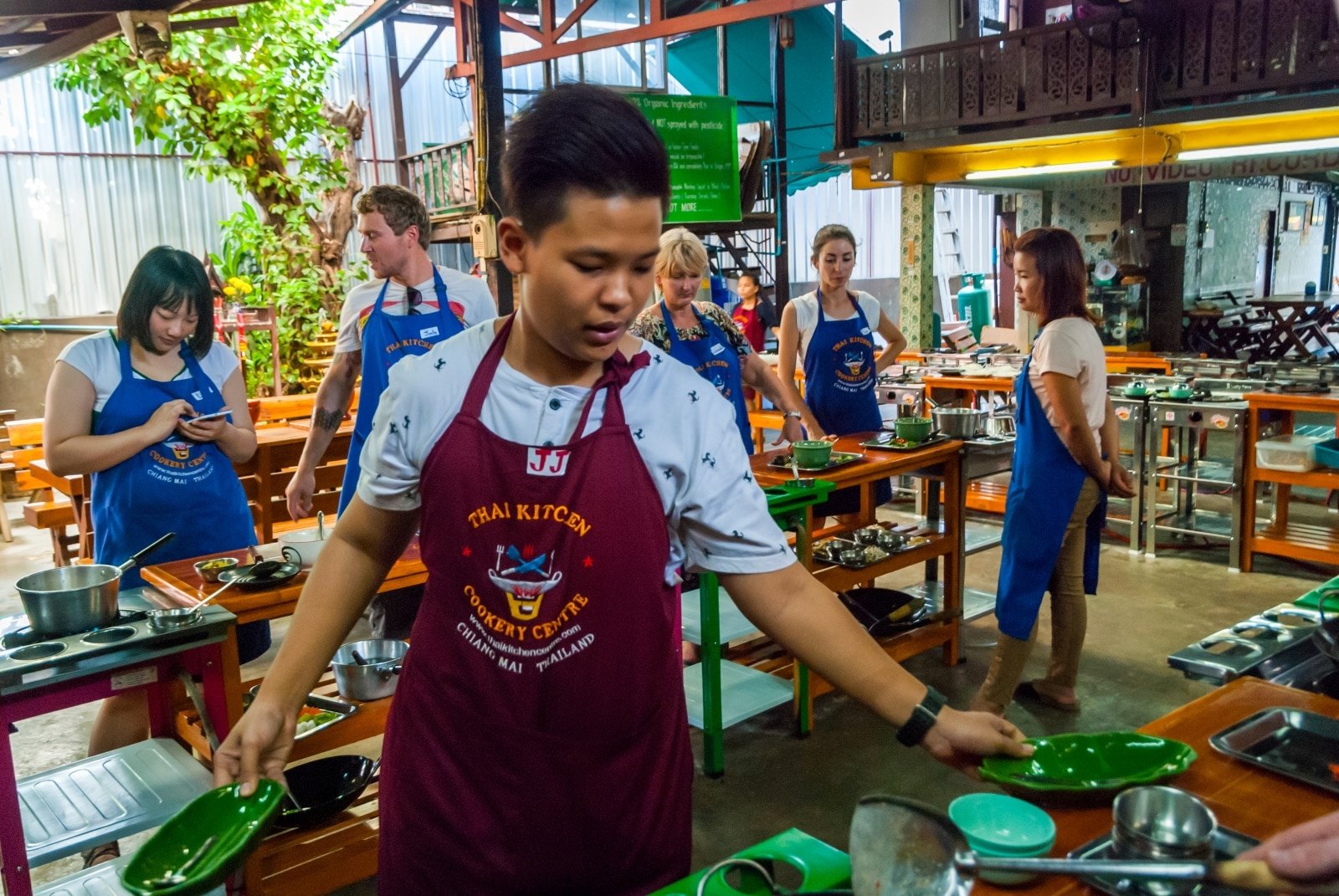
6. Community-Based Tourism in Thailand
Thailand offers a range of community-based tourism projects, particularly in the northern regions. Villages like Mae Kampong in Chiang Mai province specialize in eco-friendly tourism and cultural experiences. Visitors can engage in activities like Thai cooking classes, bamboo rafting, and learning about local tea production.
Staying in homestays and participating in daily village life allows for a genuine connection with the local community and supports their sustainable tourism initiatives.
Insider’s Tip: Learn a few phrases in Thai to communicate with your hosts and show respect for their culture.

7. Supporting Marine Conservation in the Philippines
With its rich marine biodiversity, the Philippines has several community-based tourism projects focused on marine conservation. In places like Apo Island, you can participate in snorkeling and diving tours that are managed by the local community.
These tours offer spectacular underwater experiences and educate visitors about marine conservation and the importance of protecting coral reefs. Your participation in these activities supports the local economy and funds conservation efforts, ensuring the preservation of these vital ecosystems for future generations.
Insider’s Tip: Always follow the guidelines provided by local guides to minimize your impact on the marine environment.

8. Participating in Wildlife Conservation in Botswana
Botswana’s approach to wildlife tourism involves local communities in conservation and tourism management. Projects like the Okavango Community Trust offer opportunities to engage in wildlife monitoring and sustainable tourism practices.
Visitors can join guided wildlife safaris, bird-watching excursions, and cultural tours, all led by local community members. This provides an authentic wildlife experience and ensures that tourism’s benefits are shared with the local communities, contributing to wildlife conservation and community development.
Insider’s Tip: Opt for accommodations and tours that are part of community trusts or conservancies.

9. Engaging in Community Projects in Peru
Peru offers unique community-based tourism experiences, particularly in the Andean regions. Projects in communities like the Sacred Valley involve locals in tourism, offering homestays, agricultural experiences, and cultural exchanges. Participating in these projects allows you to learn about Andean culture, traditions, and sustainable living practices. Your involvement supports the preservation of local culture and provides economic benefits to the community.
Insider’s Tip: Show appreciation for your hosts’ hospitality and participate actively in daily activities to gain the most from your experience.

10. Volunteering in Community Initiatives Worldwide
Many destinations around the world offer volunteering opportunities in community-based projects. These can range from teaching English in schools to participating in environmental clean-ups. Volunteering allows you to contribute your skills and time to meaningful causes while immersing yourself in the local culture.
Insider’s Tip: Choose ethical volunteering projects that have a clear positive impact on the community.

The Bottom Line
As you embark on your journey of community-based tourism, remember that your travel choices can significantly impact. By participating in and supporting these projects, you’re not just a tourist but a contributor to sustainable development and cultural preservation. Embrace these experiences with an open heart and mind, and you’ll find that the most rewarding travels are those that connect you deeply with the world and its diverse communities.
More Articles Like This…
Barcelona: Discover the Top 10 Beach Clubs
2024 Global City Travel Guide – Your Passport to the World’s Top Destination Cities
Exploring Khao Yai 2024 – A Hidden Gem of Thailand
The post Venture Beyond: 10 Inspiring Expeditions Into Community-Based Tourism Projects republished on Passing Thru with permission from The Green Voyage .
Featured Image Credit: Shutterstock / WBMUL.
For transparency, this content was partly developed with AI assistance and carefully curated by an experienced editor to be informative and ensure accuracy.

More for You
55 Easy Graduation Desserts Worth Celebrating
The Most Common Last Name in Every Country, Mapped
The 20 Most Beautiful Perennial Flowers to Plant in Your Garden
The best Vietnam War movie ever, based on data. Plus, find out the rest of the top 50.
This Is the Best Way To Cook Sweet Potatoes
Krispy Kreme Is Giving Away Free Dozens This Week
15 “As Seen On TV” Products That Are Well Worth The Money
These Short Hairstyles for Thick Hair Will Highlight Your Best Features
Here's No. 1 thing mentally strong couples 'never' do, says relationship therapist of 20 years
"Everyone is in complete shock": Tesla cuts Supercharger employees
The Best Potluck Desserts No One Thinks to Bring
30 food items that you might not know are banned in America
The Longest Living People In the World All Abide by the ‘Power 9’ Rule
I Am Doing a PhD at 16—My Mother's Death Is the Reason
Inside the capital city that’s sinking and the $35 billion plan to move it
Aero Precision Solus Competition Rifle Review
Neurosurgeon causes stir by suggesting parents stop playing white noise for kids' sleep
40 Recipes That Will Make You Potluck Famous
Fallout Series Draws Insane Viewership for Prime Video
Spacecraft spots "spiders" scattered across surface of Mars
We have updated our terms and conditions and privacy policy Click "Continue" to accept and continue with ET TravelWorld
We use cookies to ensure best experience for you
We use cookies and other tracking technologies to improve your browsing experience on our site, show personalize content and targeted ads, analyze site traffic, and understand where our audience is coming from. You can also read our privacy policy , We use cookies to ensure the best experience for you on our website.
By choosing I accept, or by continuing being on the website, you consent to our use of Cookies and Terms & Conditions .
- Leaders Speak
- Brand Solutions
- The Green Path: How fixed departure tourism is revolutionising sustainable travel?
Investors and companies play a crucial role in shaping the future of tourism. Sustainable tourism represents a strong investment opportunity with a lasting societal impact. Eco-resorts and community-based tourism initiatives often demonstrate strong financial performance while fostering environmental protection and cultural preservation. Krishnan feels that investors and companies can contribute to the creation of financial success and environmental responsibility reinforcing each other.
- Krishnan R ,
- ETTravelWorld
- Updated On May 1, 2024 at 01:34 AM IST

Luxury travel 2.0: Elevating panache in the age of experience
Contemporary travellers seek customised experiences tailored to their preferences and interests, facilitated by innovative technologies. Marwah, who has mastered the art of representing international destinations in India talks about how luxury is no longer solely defined by opulence and extravagance. She shares a word on how luxury today encompasses experiences, sustainability and personalisation.
- By Krishnan R ,
- Published On May 1, 2024 at 01:34 AM IST
All Comments
By commenting, you agree to the Prohibited Content Policy
Find this Comment Offensive?
- Foul Language
- Inciting hatred against a certain community
- Out of Context / Spam
Join the community of 2M+ industry professionals
Subscribe to our newsletter to get latest insights & analysis., download ettravelworld app.
- Get Realtime updates
- Save your favourite articles
- fixed departure tourism
- The Green Path
- sustainable travel
- environmental responsibility
- responsible exploration
- eco-friendly accommodations
- community-based tourism
unwto tourism highlights 2022
Un tourism | bringing the world closer.
Unwto 2021: a year in review, 2021: tourism united, resilient and determined.
2021 has been a year of learning and adapting for tourism. It has proven that only by working together can the sector overcome challenges and embrace opportunities.
Gathering the global tourism community and developing concrete actions, UNWTO has led tourism’s response with the vision of not only restarting, but doing so in a more inclusive, innovative and sustainable way.

January - March
As global tourism faced up to a second year of unprecedented crisis , UNWTO began 2021 by counting the cost so far . At the same time, however, the emergence of vaccines brought hope . The Global Tourism Crisis Committee met to explore what this meant for safe travel and the restart of tourism, while the announcement of the winners of the UNWTO Global Start-up Competition recognized the role culture and creativity will play in tourism’s restart and recovery .

April - June
Collaboration and innovation were the focusat the start of the second quarter. UNWTO partnered with IATA on a new Destination Tracker to give both tourists and destinations clear, impartial and trusted advice. And a new Start-up Competition was launched to find the best ideas for accelerating rural development through tourism. In May, the launch of the Best Tourism Villages by UNWTO generated significant interest from Members in every global region.

July - September
As destinations in Europe welcomed tourists back for the peak summer season, UNWTO highlighted the role of digital solutions for the safe restart of the sector. But UNWTO also looked ahead, to a more sustainable future , working with key partners to reduce plastic waste and consumption across every part of the sector. Together, we celebrated World Tourism Day around the theme of Tourism for Inclusive Growth, a message of solidarity and determination that was echoed on a global scale.

October - December
The final quarter of 2021 began with cautious optimism as UNWTO’s Barometer showed signs of improvement in tourist arrival numbers during the summer season in the northern hemisphere. A new partnership with Netflix will bring the message of tourism as a driver of opportunity to a massive global audience, while in November, UNWTO was tourism’s voice at COP26 and signatories to the landmark Glasgow Declaration keep growing. Finally, against the backdrop of the UNWTO General Assembly , the programme of work for the coming biennium was approved and 77% of Members voted to secure a second mandate for the Secretary-General from 2022-2025.
Growing and Moving Forward
UNWTO brings together political leaders from across the globe to deliver a strong, coordinated response. Governments, destinations, fellow UN agencies and international organizations met at key international events joining efforts to rethink tourism. Institutional coordination has proven crucial to find the solutions that build a smarter, greener and safer tourism.
Leaving Nobody Behind
The pledge to ‘ leave nobody behind ’ means nobody should miss out : Not now as we support the sector in the face of crisis, and not in the future as tourism starts again. Tourism is a proven driver of equality and opportunity. And that’s why we turn words into actions, delivering guidelines and action plans , to ensure everyone can enjoy the opportunities tourism brings.
A Shared Vision
Advancing the transformation of the tourism sector , partnerships are the only way forward. In 2021, UNWTO signed agreements with international organizations and the private sector to step our vision for the future of tourism: innovation , education , sustainability , green investment , rural development.
From business as usual to Covid-19
Looking to the future
- Regional Support Office for Asia and the Pacific (RSOAP)
- Member States in Asia and the Pacific
- SUSTAINABLE TOURISM OBSERVATORIES (INSTO)

World Tourism Barometer: September 2022
UNWTO updates World Tourism Barometer and reports international tourism back to 60% of pre-pandemic levels from January to July 2022

Below are excerpts from the September 2022 release of the UNWTO Tourism Barometer :
- The steady recovery reflects strong pent-up demand for international travel, especially in the months of June and July which are part of the Northern Hemisphere summer season. The easing or lifting of travel restrictions in an increasing number of countries also contributed to boost results.
- International tourist arrivals almost tripled (+172%) in January-July 2022 compared to the same period of 2021. Numbers climbed from -64% in January 2022 (versus 2019) to -28% in July, the strongest month since the start of the pandemic.
- Asia and the Pacific (+165%) saw arrivals more than double in the first seven months of 2022, though they remained 86% below 2019 levels.
- The ongoing recovery can also be seen in outbound tourism spending from major source markets. Expenditure from France was at -12% in January-July 2022 compared to 2019 while spending from Germany stood at -14%. International tourism spending remained at -10% in Belgium, -23% in Italy and -26% in the United States.
- The uncertain economic environment seems to have reversed prospects for a return to pre-pandemic levels in the near term. 61% of UNWTO Panel of Experts now see a potential return of international arrivals to 2019 levels in 2024 or later while those indicating a return to pre-pandemic levels in 2023 has diminished (27%) compared to the May survey (48%).

Know more about the global tourism sector performance from January to July 2022 by checking the UNWTO World Tourism Barometer Volume 20, Issue 5 .
LEAVE A REPLY Cancel reply
Save my name, email, and website in this browser for the next time I comment.
Regional Support Office in Asia and the Pacific (RSOAP)
Rsoap a to z.
- Sustainable Tourism Observatories(INSTO)
UNWTO A to Z
- About UNWTO
- Affiliate Members
- Member States
- Tourism in the 2030 Agenda
- World Tourism Day
- Technical Cooperation
- ASIA AND THE PACIFIC
- MIDDLE EAST
- RESOURCES/SERVICES
- Sustainable Development of Tourism
- Ethics, Culture and Social Responsibility
- Market Intelligence
- Tourism Data Dashboard
- Publications
- UNWTO Academy
Partners links

© UNWTO Regional Support Office for Asia and the Pacific (RSOAP)
- Course Catalog

TOURISM TRENDS 2022
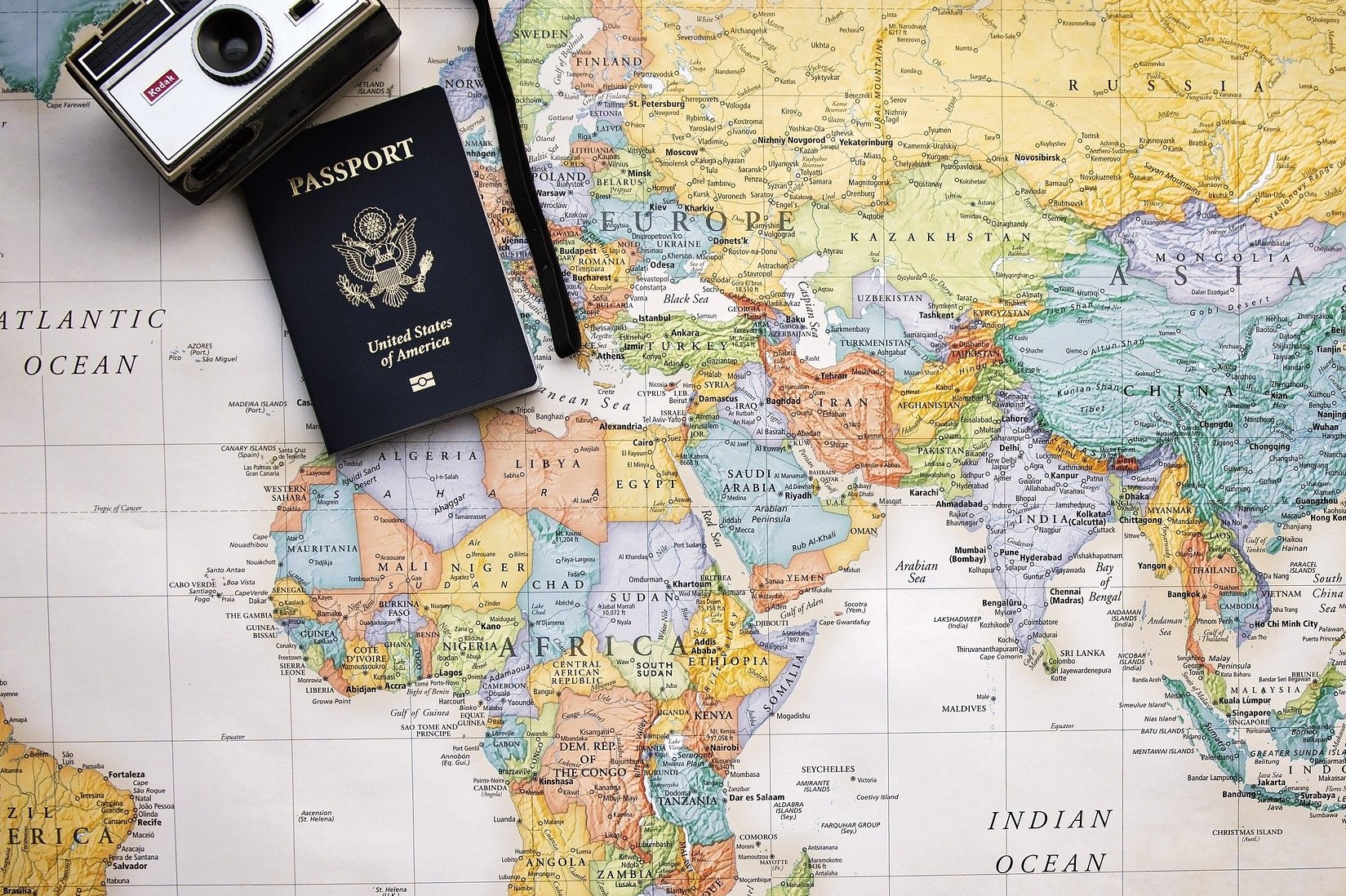
11 Aug TOURISM TRENDS 2022
The situation for tourism remains rather unusual as a result of the ongoing COVID-19 pandemic.
The crisis has marked a significant change for everyone, and above all for tourism, one of sectors hit hardest by the virus. 2020 was the year in which international tourism came to a near-complete standstill, and the only alternatives were domestic and local tourism.
2021 has seen some improvements, but only in a very subtle way as restrictions are still in place and many countries keep their borders fully or partially closed.
It is difficult to make an estimate for 2022 as it is not known how the pandemic will evolve. However, it is possible to talk about the new tourism trends that are likely to emerge over the coming year: – International travel with restrictions still maintained by both destinations and airlines in order to offer 100% security to the consumer.
– Reinforcement of COVID-19 testing; two years after the pandemic, COVID testing will still be in place as a preventive measure. – Conscious travel will be advocated. Travel to more distant destinations, but with prolonged durations of stay, as consumers look to enjoy as much of each place they visit as possible. – Green travel. Climate change is a problem that is present and growing. Consumers now are much more responsible and aware of the reality they live in on daily basis.
– A new trend is the “ed-ventures”. It is about combining education and holidays for the youngest members of the family. While adults may need to telework or attend meetings, their children can be doing workshops and learning in a playful way.
- Client log in
Metallurgicheskii Zavod Electrostal AO (Russia)
In 1993 "Elektrostal" was transformed into an open joint stock company. The factory occupies a leading position among the manufacturers of high quality steel. The plant is a producer of high-temperature nickel alloys in a wide variety. It has a unique set of metallurgical equipment: open induction and arc furnaces, furnace steel processing unit, vacuum induction, vacuum- arc furnaces and others. The factory has implemented and certified quality management system ISO 9000, received international certificates for all products. Elektrostal today is a major supplier in Russia starting blanks for the production of blades, discs and rolls for gas turbine engines. Among them are companies in the aerospace industry, defense plants, and energy complex, automotive, mechanical engineering and instrument-making plants.
Headquarters Ulitsa Zheleznodorozhnaya, 1 Elektrostal; Moscow Oblast; Postal Code: 144002
Contact Details: Purchase the Metallurgicheskii Zavod Electrostal AO report to view the information.
Website: http://elsteel.ru
EMIS company profiles are part of a larger information service which combines company, industry and country data and analysis for over 145 emerging markets.
To view more information, Request a demonstration of the EMIS service

Turn Your Curiosity Into Discovery
Latest facts.
11 Facts About National Numeracy Day May 22nd
9 Facts About Workers Memorial Day April 28th
40 facts about elektrostal.
Written by Lanette Mayes
Modified & Updated: 02 Mar 2024
Reviewed by Jessica Corbett

Elektrostal is a vibrant city located in the Moscow Oblast region of Russia. With a rich history, stunning architecture, and a thriving community, Elektrostal is a city that has much to offer. Whether you are a history buff, nature enthusiast, or simply curious about different cultures, Elektrostal is sure to captivate you.
This article will provide you with 40 fascinating facts about Elektrostal, giving you a better understanding of why this city is worth exploring. From its origins as an industrial hub to its modern-day charm, we will delve into the various aspects that make Elektrostal a unique and must-visit destination.
So, join us as we uncover the hidden treasures of Elektrostal and discover what makes this city a true gem in the heart of Russia.
Key Takeaways:
- Elektrostal, known as the “Motor City of Russia,” is a vibrant and growing city with a rich industrial history, offering diverse cultural experiences and a strong commitment to environmental sustainability.
- With its convenient location near Moscow, Elektrostal provides a picturesque landscape, vibrant nightlife, and a range of recreational activities, making it an ideal destination for residents and visitors alike.
Known as the “Motor City of Russia.”
Elektrostal, a city located in the Moscow Oblast region of Russia, earned the nickname “Motor City” due to its significant involvement in the automotive industry.
Home to the Elektrostal Metallurgical Plant.
Elektrostal is renowned for its metallurgical plant, which has been producing high-quality steel and alloys since its establishment in 1916.
Boasts a rich industrial heritage.
Elektrostal has a long history of industrial development, contributing to the growth and progress of the region.
Founded in 1916.
The city of Elektrostal was founded in 1916 as a result of the construction of the Elektrostal Metallurgical Plant.
Located approximately 50 kilometers east of Moscow.
Elektrostal is situated in close proximity to the Russian capital, making it easily accessible for both residents and visitors.
Known for its vibrant cultural scene.
Elektrostal is home to several cultural institutions, including museums, theaters, and art galleries that showcase the city’s rich artistic heritage.
A popular destination for nature lovers.
Surrounded by picturesque landscapes and forests, Elektrostal offers ample opportunities for outdoor activities such as hiking, camping, and birdwatching.
Hosts the annual Elektrostal City Day celebrations.
Every year, Elektrostal organizes festive events and activities to celebrate its founding, bringing together residents and visitors in a spirit of unity and joy.
Has a population of approximately 160,000 people.
Elektrostal is home to a diverse and vibrant community of around 160,000 residents, contributing to its dynamic atmosphere.
Boasts excellent education facilities.
The city is known for its well-established educational institutions, providing quality education to students of all ages.
A center for scientific research and innovation.
Elektrostal serves as an important hub for scientific research, particularly in the fields of metallurgy, materials science, and engineering.
Surrounded by picturesque lakes.
The city is blessed with numerous beautiful lakes, offering scenic views and recreational opportunities for locals and visitors alike.
Well-connected transportation system.
Elektrostal benefits from an efficient transportation network, including highways, railways, and public transportation options, ensuring convenient travel within and beyond the city.
Famous for its traditional Russian cuisine.
Food enthusiasts can indulge in authentic Russian dishes at numerous restaurants and cafes scattered throughout Elektrostal.
Home to notable architectural landmarks.
Elektrostal boasts impressive architecture, including the Church of the Transfiguration of the Lord and the Elektrostal Palace of Culture.
Offers a wide range of recreational facilities.
Residents and visitors can enjoy various recreational activities, such as sports complexes, swimming pools, and fitness centers, enhancing the overall quality of life.
Provides a high standard of healthcare.
Elektrostal is equipped with modern medical facilities, ensuring residents have access to quality healthcare services.
Home to the Elektrostal History Museum.
The Elektrostal History Museum showcases the city’s fascinating past through exhibitions and displays.
A hub for sports enthusiasts.
Elektrostal is passionate about sports, with numerous stadiums, arenas, and sports clubs offering opportunities for athletes and spectators.
Celebrates diverse cultural festivals.
Throughout the year, Elektrostal hosts a variety of cultural festivals, celebrating different ethnicities, traditions, and art forms.
Electric power played a significant role in its early development.
Elektrostal owes its name and initial growth to the establishment of electric power stations and the utilization of electricity in the industrial sector.
Boasts a thriving economy.
The city’s strong industrial base, coupled with its strategic location near Moscow, has contributed to Elektrostal’s prosperous economic status.
Houses the Elektrostal Drama Theater.
The Elektrostal Drama Theater is a cultural centerpiece, attracting theater enthusiasts from far and wide.
Popular destination for winter sports.
Elektrostal’s proximity to ski resorts and winter sport facilities makes it a favorite destination for skiing, snowboarding, and other winter activities.
Promotes environmental sustainability.
Elektrostal prioritizes environmental protection and sustainability, implementing initiatives to reduce pollution and preserve natural resources.
Home to renowned educational institutions.
Elektrostal is known for its prestigious schools and universities, offering a wide range of academic programs to students.
Committed to cultural preservation.
The city values its cultural heritage and takes active steps to preserve and promote traditional customs, crafts, and arts.
Hosts an annual International Film Festival.
The Elektrostal International Film Festival attracts filmmakers and cinema enthusiasts from around the world, showcasing a diverse range of films.
Encourages entrepreneurship and innovation.
Elektrostal supports aspiring entrepreneurs and fosters a culture of innovation, providing opportunities for startups and business development.
Offers a range of housing options.
Elektrostal provides diverse housing options, including apartments, houses, and residential complexes, catering to different lifestyles and budgets.
Home to notable sports teams.
Elektrostal is proud of its sports legacy, with several successful sports teams competing at regional and national levels.
Boasts a vibrant nightlife scene.
Residents and visitors can enjoy a lively nightlife in Elektrostal, with numerous bars, clubs, and entertainment venues.
Promotes cultural exchange and international relations.
Elektrostal actively engages in international partnerships, cultural exchanges, and diplomatic collaborations to foster global connections.
Surrounded by beautiful nature reserves.
Nearby nature reserves, such as the Barybino Forest and Luchinskoye Lake, offer opportunities for nature enthusiasts to explore and appreciate the region’s biodiversity.
Commemorates historical events.
The city pays tribute to significant historical events through memorials, monuments, and exhibitions, ensuring the preservation of collective memory.
Promotes sports and youth development.
Elektrostal invests in sports infrastructure and programs to encourage youth participation, health, and physical fitness.
Hosts annual cultural and artistic festivals.
Throughout the year, Elektrostal celebrates its cultural diversity through festivals dedicated to music, dance, art, and theater.
Provides a picturesque landscape for photography enthusiasts.
The city’s scenic beauty, architectural landmarks, and natural surroundings make it a paradise for photographers.
Connects to Moscow via a direct train line.
The convenient train connection between Elektrostal and Moscow makes commuting between the two cities effortless.
A city with a bright future.
Elektrostal continues to grow and develop, aiming to become a model city in terms of infrastructure, sustainability, and quality of life for its residents.
In conclusion, Elektrostal is a fascinating city with a rich history and a vibrant present. From its origins as a center of steel production to its modern-day status as a hub for education and industry, Elektrostal has plenty to offer both residents and visitors. With its beautiful parks, cultural attractions, and proximity to Moscow, there is no shortage of things to see and do in this dynamic city. Whether you’re interested in exploring its historical landmarks, enjoying outdoor activities, or immersing yourself in the local culture, Elektrostal has something for everyone. So, next time you find yourself in the Moscow region, don’t miss the opportunity to discover the hidden gems of Elektrostal.
Q: What is the population of Elektrostal?
A: As of the latest data, the population of Elektrostal is approximately XXXX.
Q: How far is Elektrostal from Moscow?
A: Elektrostal is located approximately XX kilometers away from Moscow.
Q: Are there any famous landmarks in Elektrostal?
A: Yes, Elektrostal is home to several notable landmarks, including XXXX and XXXX.
Q: What industries are prominent in Elektrostal?
A: Elektrostal is known for its steel production industry and is also a center for engineering and manufacturing.
Q: Are there any universities or educational institutions in Elektrostal?
A: Yes, Elektrostal is home to XXXX University and several other educational institutions.
Q: What are some popular outdoor activities in Elektrostal?
A: Elektrostal offers several outdoor activities, such as hiking, cycling, and picnicking in its beautiful parks.
Q: Is Elektrostal well-connected in terms of transportation?
A: Yes, Elektrostal has good transportation links, including trains and buses, making it easily accessible from nearby cities.
Q: Are there any annual events or festivals in Elektrostal?
A: Yes, Elektrostal hosts various events and festivals throughout the year, including XXXX and XXXX.
Was this page helpful?
Our commitment to delivering trustworthy and engaging content is at the heart of what we do. Each fact on our site is contributed by real users like you, bringing a wealth of diverse insights and information. To ensure the highest standards of accuracy and reliability, our dedicated editors meticulously review each submission. This process guarantees that the facts we share are not only fascinating but also credible. Trust in our commitment to quality and authenticity as you explore and learn with us.
Share this Fact:

- Victor Mukhin

Victor M. Mukhin was born in 1946 in the town of Orsk, Russia. In 1970 he graduated the Technological Institute in Leningrad. Victor M. Mukhin was directed to work to the scientific-industrial organization "Neorganika" (Elektrostal, Moscow region) where he is working during 47 years, at present as the head of the laboratory of carbon sorbents. Victor M. Mukhin defended a Ph. D. thesis and a doctoral thesis at the Mendeleev University of Chemical Technology of Russia (in 1979 and 1997 accordingly). Professor of Mendeleev University of Chemical Technology of Russia. Scientific interests: production, investigation and application of active carbons, technological and ecological carbon-adsorptive processes, environmental protection, production of ecologically clean food.
Title : Active carbons as nanoporous materials for solving of environmental problems
Quick links.
- Conference Brochure
- Tentative Program

2022 has been the year to rethink tourism. Countries around the world turned UNWTO's vision for a greener, smarter and more inclusive sector into real action. 2020 showed the relevance of tourism for sustainable development. 2021 laid the foundations for the transformation of the sector. In 2022, we made it happen. 2022 began on a positive note.
According to the latest UNWTO World Tourism Barometer, international tourism saw a strong rebound in the first five months of 2022, with almost 250 million international arrivals recorded. This compares to 77 million arrivals from January to May 2021 and means that the sector has recovered almost half (46%) of pre-pandemic 2019 levels. UN ...
International Tourism Highlights, 2023 Edition - The Impact of COVID-19 on Tourism (2020-2022) ISBN (printed version): 978-92-844-2497-9 ISBN (electronic version): 978-92-844-2498-6 DOI: 10.18111/9789284424986 Published by the World Tourism Organization (UNWTO), Madrid, Spain First published: September 2023 Revised and updated: October 2023
Find out the latest updates from the UNWTO on tourism trends, challenges and opportunities in 2022 and beyond. Learn about the UNWTO's activities, projects and partnerships in various regions and topics, such as sustainable tourism, gastronomy, investment and education.
International Tourism and COVID-19. Export revenues from international tourism dropped 62% in 2020 and 59% in 2021, versus 2019 (real terms) and then rebounded in 2022, remaining 34% below pre-pandemic levels. The total loss in export revenues from tourism amounts to USD 2.6 trillion for that three-year period. Go to Dashboard.
According to the latest UNWTO World Tourism Barometer, international tourist arrivals almost tripled in January to July 2022 (+172%) compared to the same period of 2021. This means t he sector recovered almost 60% of pre-pandemic levels. The steady recovery reflects strong pent-up demand for international travel as well as the easing or lifting ...
The time is now to seize this opportunity to rethink how we do tourism. The official World Tourism Day celebration will be held in Bali, Indonesia, on 27 September, highlighting the shift towards tourism being recognized as a crucial pillar of development. Wonderful Indonesia - Witness the 42nd World Tourism Day 2022 in Bali, Indonesia!
In terms of tourist numbers, the year 2022 is expected to close with over 900 million international arrivals, despite growing challenges pointing to a softening of the recovery pace. International tourist arrivals: 2020, 2021 and Scenarios for 2022 (monthly change over 2019,%) Source UNWTO World Tourism Barometer: November 2022 Press Release.
January - March. As global tourism faced up to a second year of unprecedented crisis, UNWTO began 2021 by counting the cost so far.At the same time, however, the emergence of vaccines brought hope.The Global Tourism Crisis Committee met to explore what this meant for safe travel and the restart of tourism, while the announcement of the winners of the UNWTO Global Start-up Competition ...
Below are excerpts from the latest World Tourism Barometer May 2022 issue: According to the latest UNWTO World Tourism Barometer, international tourism saw a 182% year-on-year increase in January-March 2022, with destinations worldwide welcoming an estimated 117 million international arrivals compared to 41 million in Q1 2021.
The UNWTO Elibrary is an online service from the World Tourism Organization (UNWTO) with a broad coverage of tourism and related subject areas. ... International Tourism Highlights, 2023 Edition - The Impact of COVID-19 on Tourism (2020-2022) Revised and updated, October 2023. Released: December 2023.
The 7th UNWTO World Forum on Gastronomy Tourism will be held from Monday, December 12 to Thursday, December 15, 2022 (4 days).
The economic contribution of tourism (tourism direct gross domestic product) is estimated at US$1.9 trillion in 2021, above the US$1.6 trillion in 2020, but still well below the pre-pandemic value of US$ 3.5 trillion. The latest UNWTO Panel of Experts survey indicates that 61% of tourism professionals expect better performance in 2022 than in 2021.
Below are relevant points to the July 2022 World Tourism Barometer: Nearly 250 million international trips were recorded worldwide in the first five months of the year, more than three times the number of arrivals recorded in the same period of 2021 (77 million). Robust performance is also reflected in hotel occupancy rates.
2022-10-28. Below are excerpts from the September 2022 release of the UNWTO Tourism Barometer: The steady recovery reflects strong pent-up demand for international travel, especially in the months of June and July which are part of the Northern Hemisphere summer season. The easing or lifting of travel restrictions in an increasing number of ...
International tourism continues to outpace the global economy. 2. Driven by a relatively strong global economy, a growing middle class in emerging economies, technological advances, new business models, affordable travel costs and visa facilitation, international tourist arrivals grew 5% in 2018 to reach the 1.4 billion mark.
UNWTO Tourism Academy | TOURISM TRENDS 2022. The situation for tourism remains rather unusual as a result of the ongoing COVID-19 pandemic. The crisis has marked a significant change for everyone, and above all for tourism, one of sectors hit hardest by the virus. 2020 was the year in which international tourism came to a near-complete ...
International Tourism Highlights, 2023 Edition - The Impact of COVID-19 on Tourism (2020-2022) Revised and updated, October 2023 Published: December 2023 Pages: 32
International Tourism Highlights, 2020 Edition. Published: January 2021 Pages: 23. eISBN: 978-92-844-2245-6 | ISBN: 978-92-844-2244-9. Abstract: 2019 was another year of strong growth, though international arrivals grew below the exceptional rates seen in 2017 (+7%) and 2018 (+6%). Demand was somewhat weaker for travel to advanced economy ...
Main Activities: Iron and Steel Mills and Ferroalloy Manufacturing | Nonferrous Metal (except Copper and Aluminum) Rolling, Drawing, and Extruding. Full name: Metallurgicheskii Zavod Electrostal AO Profile Updated: February 22, 2024. Buy our report for this company USD 29.95 Most recent financial data: 2022 Available in: English & Russian ...
40 Facts About Elektrostal. Elektrostal is a vibrant city located in the Moscow Oblast region of Russia. With a rich history, stunning architecture, and a thriving community, Elektrostal is a city that has much to offer. Whether you are a history buff, nature enthusiast, or simply curious about different cultures, Elektrostal is sure to ...
Catalysis Conference is a networking event covering all topics in catalysis, chemistry, chemical engineering and technology during October 19-21, 2017 in Las Vegas, USA. Well noted as well attended meeting among all other annual catalysis conferences 2018, chemical engineering conferences 2018 and chemistry webinars.
In the city of Elektrostal in Russia, a drone attack occurred. It's reported that no one was injured as a result of the incident. Additional details, including the particulars of the attack, potential motives or responsible parties, have not been provided. However, the fact that a drone was used as a means of attack underscores
- Car Rentals
- Airport Transfers
- Attractions & Tours
- Bundle & Save
- Destinations
- Trip.com Rewards
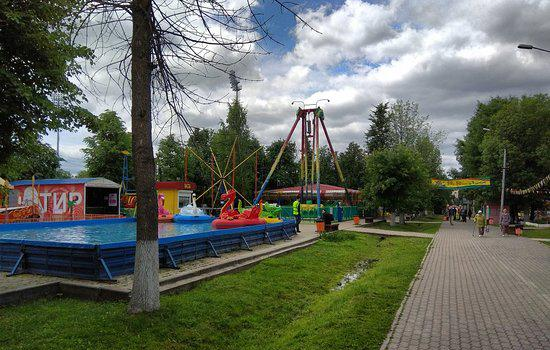
Elektrostal'

Elektrostal' Travel Guide
Experience elektrostal'.
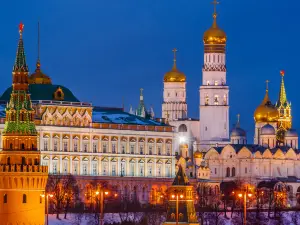
The Moscow Kremlin

Krasnaya ploshchad'

State Historical Museum

St. Basil's Cathedral

Great Moscow State Circus
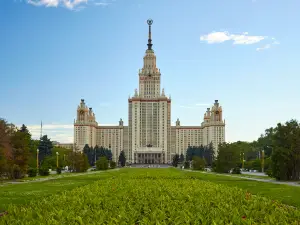
Moscow State University
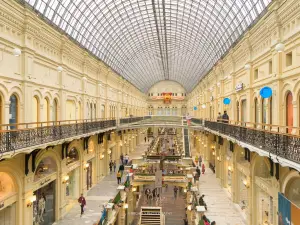
Moscow Metro
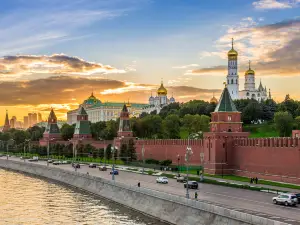
Moskva River

Arbat Street
Where to stay, hotel pioner, yahonty noginsk, apelsin hotel, house in pushkino, gostinyi dvor hotel, recreation center dubki, yakhontovy les apartments, sloboda na klyazme, what to eat.

Cafe Vostochny Express

Kroshka Kartoshka

Coffee Shop Usy Teodora Glagoleva

Fabrika Obedov

Beer Club Tolsty Medved

Cafe Antresole

Quest-Cafe 4 Komnaty

Prima Bolshogo
Other recommended cities.
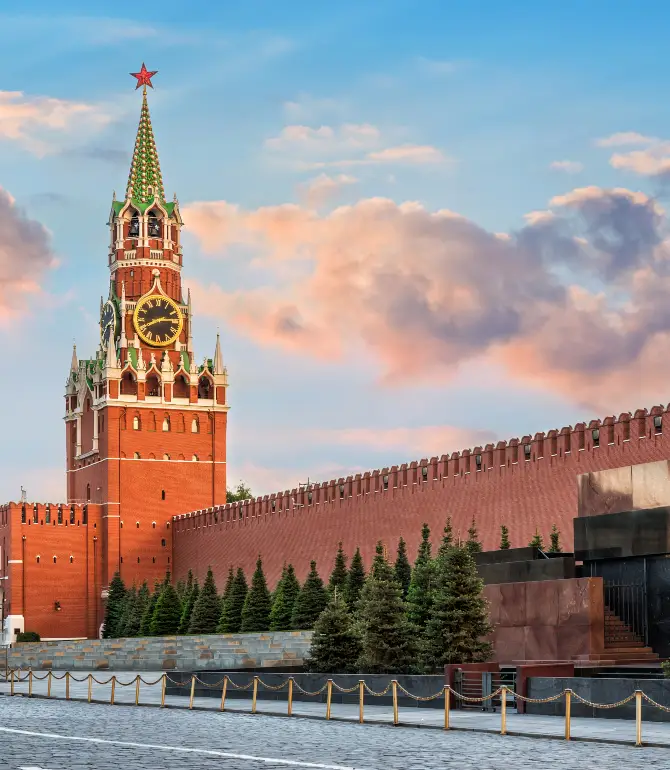
Popular Types of Attractions in Elektrostal'
Popular attractions in elektrostal', popular restaurants in elektrostal', popular destinations, recommended attractions at popular destinations, more things to do in elektrostal'.
- Customer Support
- Service Guarantee
- More Service Info
- Website Feedback
- About Trip.com
- Terms & Conditions
- Privacy Statement
- About Trip.com Group
Other Services
- Investor Relations
- Affiliate Program
- List My Property
- Become a Supplier
View prices for your travel dates
- Excellent 6
- Very Good 11
- All languages ( 25 )
- Russian ( 25 )
- English ( 0 )
Own or manage this property? Claim your listing for free to respond to reviews, update your profile and much more.
ELEKTROSTAL HOTEL

40 Facts About Elektrostal
Written by Lanette Mayes
Modified & Updated: 02 Mar 2024
Reviewed by Jessica Corbett

Elektrostal is a vibrant city located in the Moscow Oblast region of Russia. With a rich history, stunning architecture, and a thriving community, Elektrostal is a city that has much to offer. Whether you are a history buff, nature enthusiast, or simply curious about different cultures, Elektrostal is sure to captivate you.
This article will provide you with 40 fascinating facts about Elektrostal, giving you a better understanding of why this city is worth exploring. From its origins as an industrial hub to its modern-day charm, we will delve into the various aspects that make Elektrostal a unique and must-visit destination.
So, join us as we uncover the hidden treasures of Elektrostal and discover what makes this city a true gem in the heart of Russia.
Key Takeaways:
- Elektrostal, known as the “Motor City of Russia,” is a vibrant and growing city with a rich industrial history, offering diverse cultural experiences and a strong commitment to environmental sustainability.
- With its convenient location near Moscow, Elektrostal provides a picturesque landscape, vibrant nightlife, and a range of recreational activities, making it an ideal destination for residents and visitors alike.
Known as the “Motor City of Russia.”
Elektrostal, a city located in the Moscow Oblast region of Russia, earned the nickname “Motor City” due to its significant involvement in the automotive industry.
Home to the Elektrostal Metallurgical Plant.
Elektrostal is renowned for its metallurgical plant, which has been producing high-quality steel and alloys since its establishment in 1916.
Boasts a rich industrial heritage.
Elektrostal has a long history of industrial development, contributing to the growth and progress of the region.
Founded in 1916.
The city of Elektrostal was founded in 1916 as a result of the construction of the Elektrostal Metallurgical Plant.
Located approximately 50 kilometers east of Moscow.
Elektrostal is situated in close proximity to the Russian capital, making it easily accessible for both residents and visitors.
Known for its vibrant cultural scene.
Elektrostal is home to several cultural institutions, including museums, theaters, and art galleries that showcase the city’s rich artistic heritage.
A popular destination for nature lovers.
Surrounded by picturesque landscapes and forests, Elektrostal offers ample opportunities for outdoor activities such as hiking, camping, and birdwatching.
Hosts the annual Elektrostal City Day celebrations.
Every year, Elektrostal organizes festive events and activities to celebrate its founding, bringing together residents and visitors in a spirit of unity and joy.
Has a population of approximately 160,000 people.
Elektrostal is home to a diverse and vibrant community of around 160,000 residents, contributing to its dynamic atmosphere.
Boasts excellent education facilities.
The city is known for its well-established educational institutions, providing quality education to students of all ages.
A center for scientific research and innovation.
Elektrostal serves as an important hub for scientific research, particularly in the fields of metallurgy, materials science, and engineering.
Surrounded by picturesque lakes.
The city is blessed with numerous beautiful lakes, offering scenic views and recreational opportunities for locals and visitors alike.
Well-connected transportation system.
Elektrostal benefits from an efficient transportation network, including highways, railways, and public transportation options, ensuring convenient travel within and beyond the city.
Famous for its traditional Russian cuisine.
Food enthusiasts can indulge in authentic Russian dishes at numerous restaurants and cafes scattered throughout Elektrostal.
Home to notable architectural landmarks.
Elektrostal boasts impressive architecture, including the Church of the Transfiguration of the Lord and the Elektrostal Palace of Culture.
Offers a wide range of recreational facilities.
Residents and visitors can enjoy various recreational activities, such as sports complexes, swimming pools, and fitness centers, enhancing the overall quality of life.
Provides a high standard of healthcare.
Elektrostal is equipped with modern medical facilities, ensuring residents have access to quality healthcare services.
Home to the Elektrostal History Museum.
The Elektrostal History Museum showcases the city’s fascinating past through exhibitions and displays.
A hub for sports enthusiasts.
Elektrostal is passionate about sports, with numerous stadiums, arenas, and sports clubs offering opportunities for athletes and spectators.
Celebrates diverse cultural festivals.
Throughout the year, Elektrostal hosts a variety of cultural festivals, celebrating different ethnicities, traditions, and art forms.
Electric power played a significant role in its early development.
Elektrostal owes its name and initial growth to the establishment of electric power stations and the utilization of electricity in the industrial sector.
Boasts a thriving economy.
The city’s strong industrial base, coupled with its strategic location near Moscow, has contributed to Elektrostal’s prosperous economic status.
Houses the Elektrostal Drama Theater.
The Elektrostal Drama Theater is a cultural centerpiece, attracting theater enthusiasts from far and wide.
Popular destination for winter sports.
Elektrostal’s proximity to ski resorts and winter sport facilities makes it a favorite destination for skiing, snowboarding, and other winter activities.
Promotes environmental sustainability.
Elektrostal prioritizes environmental protection and sustainability, implementing initiatives to reduce pollution and preserve natural resources.
Home to renowned educational institutions.
Elektrostal is known for its prestigious schools and universities, offering a wide range of academic programs to students.
Committed to cultural preservation.
The city values its cultural heritage and takes active steps to preserve and promote traditional customs, crafts, and arts.
Hosts an annual International Film Festival.
The Elektrostal International Film Festival attracts filmmakers and cinema enthusiasts from around the world, showcasing a diverse range of films.
Encourages entrepreneurship and innovation.
Elektrostal supports aspiring entrepreneurs and fosters a culture of innovation, providing opportunities for startups and business development.
Offers a range of housing options.
Elektrostal provides diverse housing options, including apartments, houses, and residential complexes, catering to different lifestyles and budgets.
Home to notable sports teams.
Elektrostal is proud of its sports legacy, with several successful sports teams competing at regional and national levels.
Boasts a vibrant nightlife scene.
Residents and visitors can enjoy a lively nightlife in Elektrostal, with numerous bars, clubs, and entertainment venues.
Promotes cultural exchange and international relations.
Elektrostal actively engages in international partnerships, cultural exchanges, and diplomatic collaborations to foster global connections.
Surrounded by beautiful nature reserves.
Nearby nature reserves, such as the Barybino Forest and Luchinskoye Lake, offer opportunities for nature enthusiasts to explore and appreciate the region’s biodiversity.
Commemorates historical events.
The city pays tribute to significant historical events through memorials, monuments, and exhibitions, ensuring the preservation of collective memory.
Promotes sports and youth development.
Elektrostal invests in sports infrastructure and programs to encourage youth participation, health, and physical fitness.
Hosts annual cultural and artistic festivals.
Throughout the year, Elektrostal celebrates its cultural diversity through festivals dedicated to music, dance, art, and theater.
Provides a picturesque landscape for photography enthusiasts.
The city’s scenic beauty, architectural landmarks, and natural surroundings make it a paradise for photographers.
Connects to Moscow via a direct train line.
The convenient train connection between Elektrostal and Moscow makes commuting between the two cities effortless.
A city with a bright future.
Elektrostal continues to grow and develop, aiming to become a model city in terms of infrastructure, sustainability, and quality of life for its residents.
In conclusion, Elektrostal is a fascinating city with a rich history and a vibrant present. From its origins as a center of steel production to its modern-day status as a hub for education and industry, Elektrostal has plenty to offer both residents and visitors. With its beautiful parks, cultural attractions, and proximity to Moscow, there is no shortage of things to see and do in this dynamic city. Whether you’re interested in exploring its historical landmarks, enjoying outdoor activities, or immersing yourself in the local culture, Elektrostal has something for everyone. So, next time you find yourself in the Moscow region, don’t miss the opportunity to discover the hidden gems of Elektrostal.
Q: What is the population of Elektrostal?
A: As of the latest data, the population of Elektrostal is approximately XXXX.
Q: How far is Elektrostal from Moscow?
A: Elektrostal is located approximately XX kilometers away from Moscow.
Q: Are there any famous landmarks in Elektrostal?
A: Yes, Elektrostal is home to several notable landmarks, including XXXX and XXXX.
Q: What industries are prominent in Elektrostal?
A: Elektrostal is known for its steel production industry and is also a center for engineering and manufacturing.
Q: Are there any universities or educational institutions in Elektrostal?
A: Yes, Elektrostal is home to XXXX University and several other educational institutions.
Q: What are some popular outdoor activities in Elektrostal?
A: Elektrostal offers several outdoor activities, such as hiking, cycling, and picnicking in its beautiful parks.
Q: Is Elektrostal well-connected in terms of transportation?
A: Yes, Elektrostal has good transportation links, including trains and buses, making it easily accessible from nearby cities.
Q: Are there any annual events or festivals in Elektrostal?
A: Yes, Elektrostal hosts various events and festivals throughout the year, including XXXX and XXXX.
Was this page helpful?
Our commitment to delivering trustworthy and engaging content is at the heart of what we do. Each fact on our site is contributed by real users like you, bringing a wealth of diverse insights and information. To ensure the highest standards of accuracy and reliability, our dedicated editors meticulously review each submission. This process guarantees that the facts we share are not only fascinating but also credible. Trust in our commitment to quality and authenticity as you explore and learn with us.
Share this Fact:

IMAGES
COMMENTS
Community-based tourism is a type of sustainable tourism where residents invite travelers to visit or stay in their communities with the intent to provide an authentic experience of the local ...
Community-based tourism can reap great rewards. Done well, it enables local organisations to protect precious habitats, preserve unique culture and empower grassroots employees. This article was ...
2. Make a positive impact. Developing cultural experiences based on local terms provides an opportunity to generate tangible benefits for the destination. By respecting the locals' wishes, you can contribute to the preservation of cultural heritage, promote economic growth, and support community development.
Emerged in Thailand in the 1990s, 'community-based tourism (CBT)' proposes the idea of 'tourism by the local people for the local people'. It is one of the solutions for sustainable tourism because, under this framework, local people are the key decision-makers of their tourism development and the ones to fully benefit from it.
Community-based tourism is both an idea about and an approach to the development and planning of tourism. Its definition rests on the assumption that the success (and sustainability) of tourism requires the involvement and control of those affected by its development. As its starting point, community-based tourism is a response to a concern ...
Community-based tourism gets closer to the community and the authentic culture. While a coach tour stops in a local village to buy handicrafts, community-based tourism involves tourists with the community and its lifestyle, which is a two-way interaction.
Community-based tourism involves giving visitors to a country the chance to meet local people and experience authentic cultural exchange. It's about supporting locally led projects that have a direct benefit for the local community, as well as travellers. Community-based tourism can take many forms. Some of the most common types include ...
Understanding Community-Based Tourism. At its core, community-based tourism is a sustainable and participatory travel model that places local communities at the forefront of the tourism experience. Unlike traditional tourism, where large corporations dictate the narrative, CBT is a collaborative effort that involves the active participation of ...
Community-based tourism is both an idea about and an approach to the development and planning of tourism. Its notion rests on the assumption that the success (and sustainability) of tourism requires the involvement of those who are affected by the development.Approaches to community-based tourism consider how and why those who are affected by tourism are (or should be) involved in its development.
Guidelines for Community-based Tourism. All Regions. 31 Aug 06. 30 Sep 06. Related Content. Africa. UNWTO Briefing Paper "Towards Measuring the Economic Va... 23 Sep 2019. All Regions.
Community-Based Tourism is seen for having a huge impact on rural communities in the Philippines and many countries. It is generally known for its pro-poor implications that deliver socio-cultural ...
This contribution suggests that community-based tourism (CBT) can create commercial and social value to destinations, local businesses as well as to residents. At the same time, it clarifies that CBT offers rich, immersive cultural experiences that can enhance the tourists' experiences when visiting different communities.
Community-based tourism (CBT) remains an attractive model for improving the socio-economic conditions of communities through tourism. It is also a tool for fostering environmental conservation.
In recent years, Community-based tourism is seen as one of the best approach used to tackle tourism-related problems and preserve traditional culture. Therefore, this research aims to evaluates the opportunities and challenges of CBT development in Thanh Ha pottery village and proposes recommendations for sustainable development of CBT there.
Community-based tourism (CBT) has often been viewed as a community development tool for alleviating. poverty and improving community lifestyle stand ards. The mention of community-based tourism ...
Community-based tourism (CBT) has become a popular segment of sustainable tourism development worldwide to provide community welfare and empowerment. CBT has been pushed as one of the strategies for poverty alleviation, particularly in marginalized regions and communities. Thus, tourism has also experienced negative impacts creating a ...
Community-based tourism (CBT), in general, is a type of tourism that focuses on enhancing the relationship between the local communities and the tourists . The term "community-based tourism" itself is not new in the tourism field, but rather, it is based on an old idea that has existed for decades [ 2 ].
Esteban Ruiz-Ballesteros. Community-based tourism (CBT) is a way of organizing tourism that must have a consistent effect on the configuration of the community. Therefore, community is a strategic element in the analysis of CBT. However, studies into CBT are usually lacking an anchoring point for a solid conceptualization of community.
Community-based tourism (CBT) operates on a paradigm of community self-governance wherein traditional communities assume the role of instigators and protagonists in the realm of tourism within their territories. Within this framework, CBT emerges as a means of realizing the sustainable development goals (SDGs) articulated in the United Nations' Agenda 2030, outlined in 2015.
Community-based tourism projects offer a unique opportunity to engage with local communities, understand their culture, and contribute positively to their development.
Clark brings expertise on sustainable nature-based tourism, resource management and community resilience October 11, 2023 - by Paul Schattenberg Connor Clark, Ph.D., an expert in sustainable tourism, has joined the Department of Hospitality, Hotel Management and Tourism in the Texas A&M College of Agriculture and Life Sciences .
Fixed Departure Tourism: Investors and companies play a crucial role in shaping the future of tourism. Sustainable tourism represents a strong investment opportunity with a lasting societal impact. Eco-resorts and community-based tourism initiatives often demonstrate strong financial performance while fostering environmental protection and cultural preservation.
2022 has been the year to rethink tourism. Countries around the world turned UNWTO's vision for a greener, smarter and more inclusive sector into real action. 2020 showed the relevance of tourism for sustainable development. 2021 laid the foundations for the transformation of the sector. In 2022, we made it happen. 2022 began on a positive note....
Community-Based Tourism (CBT) emerged during the 1970s as an alternative response to the deleterious consequences of mass tourism (López-Guzmán et al., 2011; Reid et al., 2004). Although varied def...
Explore Elektrostal' with Trip.com's comprehensive travel guide. Discover the city's top attractions, best local dishes, essential travel tips, and hidden gems. Get insights from real travelers' reviews and make the most of your visit.
Elektrostal Hotel, Elektrostal: See 25 traveler reviews, 44 candid photos, and great deals for Elektrostal Hotel, ranked #1 of 2 B&Bs / inns in Elektrostal and rated 4 of 5 at Tripadvisor.
40 Facts About Elektrostal. Elektrostal is a vibrant city located in the Moscow Oblast region of Russia. With a rich history, stunning architecture, and a thriving community, Elektrostal is a city that has much to offer. Whether you are a history buff, nature enthusiast, or simply curious about different cultures, Elektrostal is sure to ...